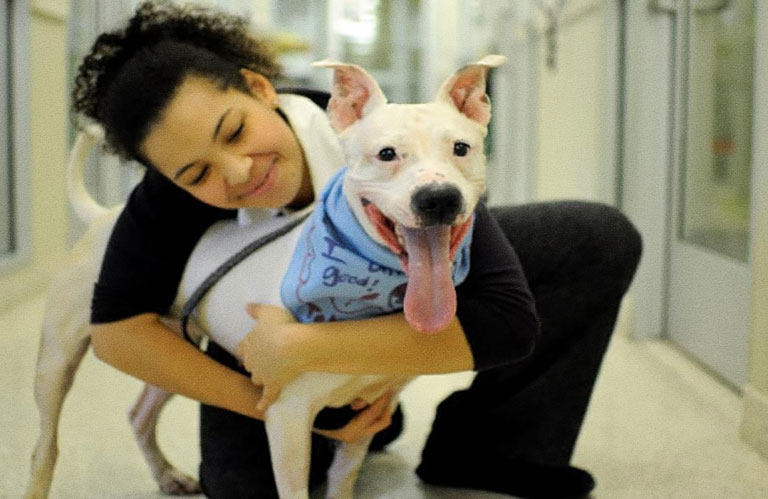
Current Situation

Most people have heard the famous novelty song, “How Much is that Doggie in the Window?” As innocent as that song seemed when it was released, the reality is that any dog sold in a pet store today usually results in the death of an unwanted dog in an animal shelter. Moreover, the primary sources of the puppies sold in pet stores are unsanitary rural breeding facilities called “puppy mills,” where the mothers of the puppies are often mistreated and abused, frequently living no longer than five years of age. It is no wonder that in 2009, the singer of the song, Patti Page, after learning that approximately one million shelter dogs a year are killed in America because of the puppy mill industry, recorded a new version entitled “Do You See That Doggie in the Shelter?” The new lyrics emphasized the need to adopt dogs from animal shelters instead of purchasing them from pet stores.
The reality is that any dog sold in a pet store today usually results in the death of an unwanted dog in an animal shelter
Puppy Mill Factories

After World War II, in the 1950s, the American midwest experienced consecutive drought years which resulted in widespread crop failure. In response, the United States Department of Agriculture (USDA) began promoting purebred dogs to family farmers as an alternate “crop” that was not dependent on weather conditions and rainfall. Many farmers embraced the idea. They repurposed their chicken coops, purchased a male and female pure-breed dog and began the breeding process. Within a year the farmers were selling puppies to pet stores in the recently constructed strip malls that began popping up throughout suburban America. The puppy mill industry was born.
Today, puppy mills are an urgent, widespread problem that has resulted in the deaths of tens of millions of unwanted dogs in American animal shelters. What were once small, family run operations housing one or two kennels and producing 10-20 dogs a year have become filthy, run-down, mass-production factories of crates and windowless sheds producing thousands of dogs annually. It is currently estimated that there are about 10,000 puppy mills in the United States producing upwards of two million puppies a year. The owners of the puppy mills sell the puppies to pet stores, third-party agents and directly to consumers through online ads and newspaper classified ads.
Only the healthiest of the puppies born at a puppy mill make it to a pet store or a loving family. Thousands more are starved, released, or otherwise killed at the puppy mills because they aren’t healthy enough to sell. Thousands more are sold to laboratories to be used in cruel animal experiments.
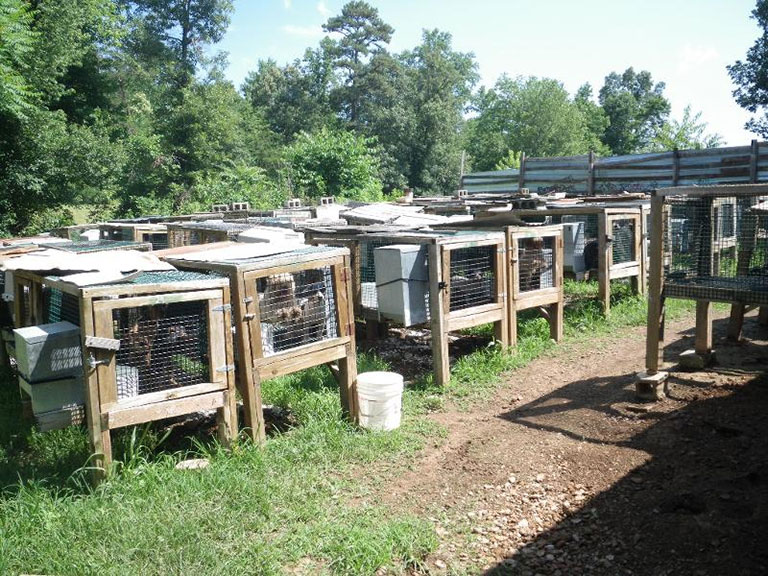


At the puppy mills, dogs are often kept in cramped wire hutches, crates and wooden boxes inside sheds with no temperature control. If the enclosures are outdoors, they often lack protection from harsh natural elements. The dogs are exposed to extreme heat and cold as well as dangerous bacterial and parasitic diseases from feces- and urine-soaked bedding and matted fur. Hundreds, sometimes thousands, of dogs live in unsanitary and cramped cages without sufficient food and water or adequate grooming and socialization. Veterinary care is often non-existent, and serious diseases like parvo and kennel cough are common. Puppy mill dogs and puppies are hardly ever released from their cages to exercise or play and rarely experience human affection.
According to Animal Welfare Act standards, it is legal to leave a breeding dog for her entire life in a cage that is only six inches longer than the length and width of her body
Puppy mills are regulated by the US Department of Agriculture under the Animal Welfare Act, which was passed by Congress in 1966. The Animal Welfare Act established minimum standards of care for animals bred for commercial sale. Unfortunately, these standards are woefully inadequate. Conditions that most people would consider cruel are actually legal. For example, according to Animal Welfare Act standards, it is legal to leave a breeding dog for her entire life in a cage that is only six inches longer than the length and width of her body. The dog never has to be let out of the cage her entire life. Due to loopholes in the Animal Welfare Act, some smaller puppy mills are not even required to be licensed and, hence, operate without any oversight at all.
Twenty different states currently have laws regulating puppy mills, and more are considering them. However, breeders, farmers, and the owners of puppy mills are fighting to get these laws repealed. Missouri voters enacted a Puppy Mill Law in 2010, requiring among other things, that all cages are to be taller than the height of the dogs standing within them and limiting the number of breeding dogs per facility to 50. The next year, due to pressure from breeders and farmers, the law was repealed.
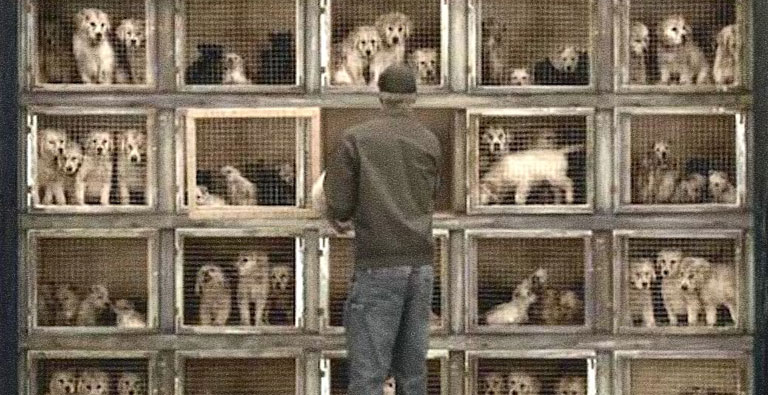
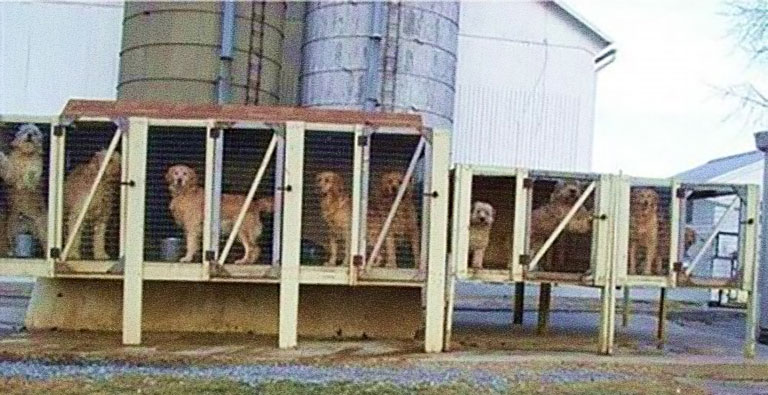
Breeding Machines

The mother and father of a puppy in a pet store will most likely not make it out of the mill alive (nor will his numerous brothers and sisters born with visible physical ailments). In order to make the most amount of money, puppy mill owners breed the female dogs as frequently as possible with very little or no recovery time between litters. After an average of about four or five years, the mothers’ bodies are so physically weakened, they no longer can reproduce. At this point they are no longer useful to the mill and are killed. Furthermore, mother dogs are allowed to live with their puppies only a fraction of the natural weaning period, which is usually around 8-10 weeks. Instead, puppies are typically taken away from their mother after just 4-5 weeks, causing emotional trauma to both mother and puppy. This early separation causes further health problems in the puppy due to the premature weaning from the mother’s milk, which is rich in vitamins and nutrients and builds up the puppy’s immune system.
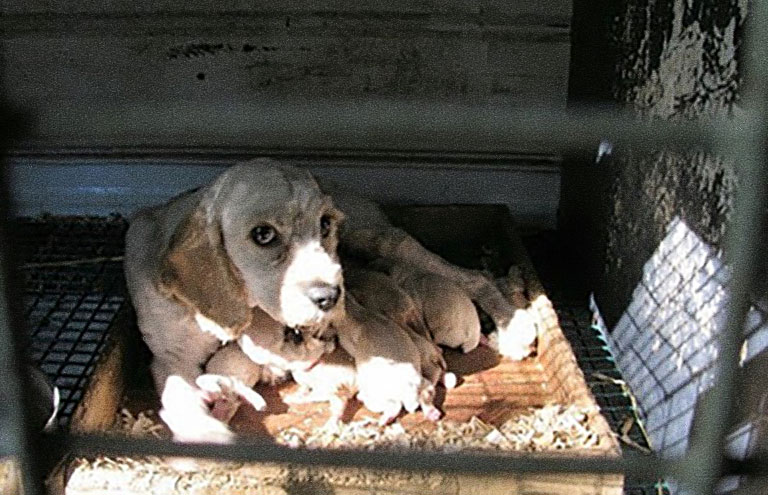
Puppy mill owners breed the female dogs as frequently as possible with very little or no recovery time between litters
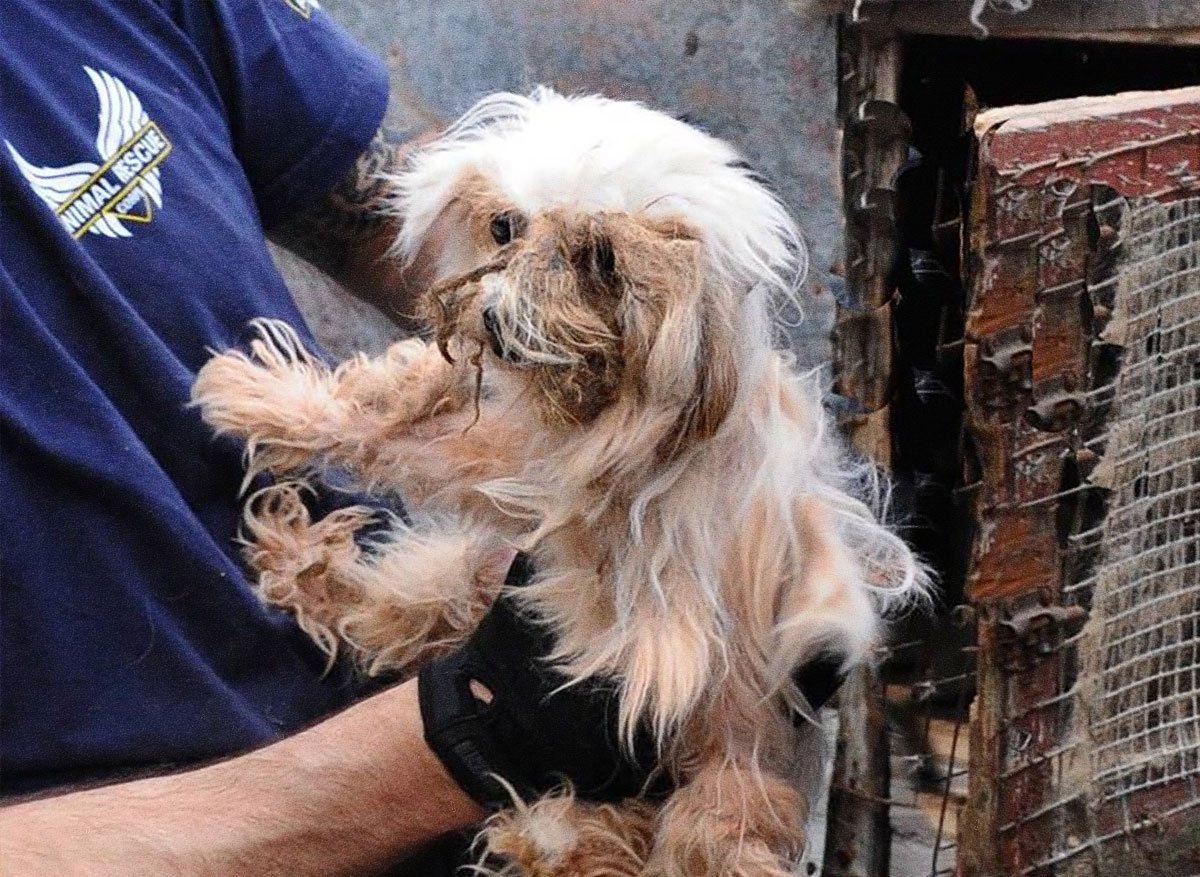
The mother and father breeder dogs live their entire lives in cages and enclosures, almost always with wire flooring. This lack of solid ground leads to severe paw swelling and bleeding; almost all breeding dogs’ paws are significantly to severely deformed at the time of their deaths. Moreover, because these dogs are malnourished and often receive no medical attention during the course of their lives, most suffer from severe tooth decay, internal parasites, dehydration, and other serious medical conditions.
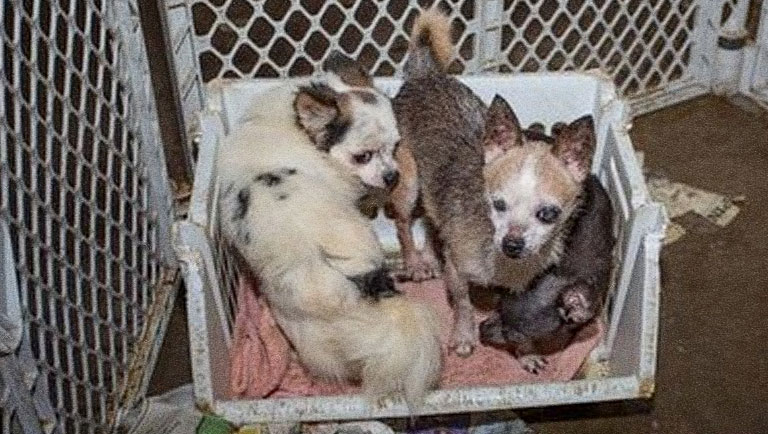
Puppy Mill Health Issues


Because the puppies produced at puppy mills are usually the result of inbreeding, they are often born with debilitating hereditary conditions like epilepsy, heart and kidney disease, eye and ear disorders, muscular/skeletal conditions and respiratory disease. Moreover, they frequently suffer a multitude of social, emotional, and physical conditions due to the harsh, overcrowded environment. Fighting is common in the overcrowded crates and pens, where the dogs are forced to compete for food and water. Because the dogs spend most of their time unattended by the puppy mill owners, fighting goes unseen, and injuries are not treated. It is not uncommon for dogs to die in the cages due to untreated wounds and injuries. If this weren’t bad enough, many puppies die during the often long transport to pet shops.
They are often born with debilitating hereditary conditions like epilepsy, heart and kidney disease, eye and ear disorders, muscular/skeletal conditions and respiratory disease
Animal Shelters

Approximately three million dogs end up in shelters each year, and close to a million dogs are killed each year in shelters in the United States alone. Dogs that are given up by their owners as well as lost and stray dogs picked up by animal control officers, are almost always turned over to a local shelter. Many people mistakenly believe that dogs at shelters are less desirable, not knowing that many of them are the direct result of puppy mill overbreeding, or that they came from good homes and were given up because of extenuating circumstances. Stray or lost dogs that are rescued often end up becoming the most loving and loyal pets.
Shelter life is extremely difficult for most dogs. Many of them came from loving homes and were lost, and were separated from their families or abandoned, or were stray and lived in the street. Either way they were not used to being confined in small kennels, or in overcrowded and loud shelters. Many get mislabeled as “aggressive” as they are confused and scared, which makes them not easily adoptable.
Sadly, most shelters don’t have enough room to indefinitely house and care for all of the dogs they receive. Although most animal care organizations recommend that shelters hold strays for a minimum of five days, some dogs are euthanized after two or three days, due to the high volume of dogs entering in, and the lack of space.
Some states even allow the purchase of shelter dogs to university and pharmaceutical labs for experimentation, where they are literally tortured. There are some “no-kill” shelters that refuse to euthanize any animals that end up in their facility. Unfortunately, the percentage of stray dogs that are lucky enough to make it into a no-kill shelter is small. Also many people don’t realize that a “no-kill” shelter can still put down up to 10% of their animals down and still have no-kill status, although euthanasia is only used for extremely sick dogs, or ones that are considered extremely dangerous.
Some states even allow the purchase of shelter dogs to university and pharmaceutical labs for experimentation, where they are literally tortured
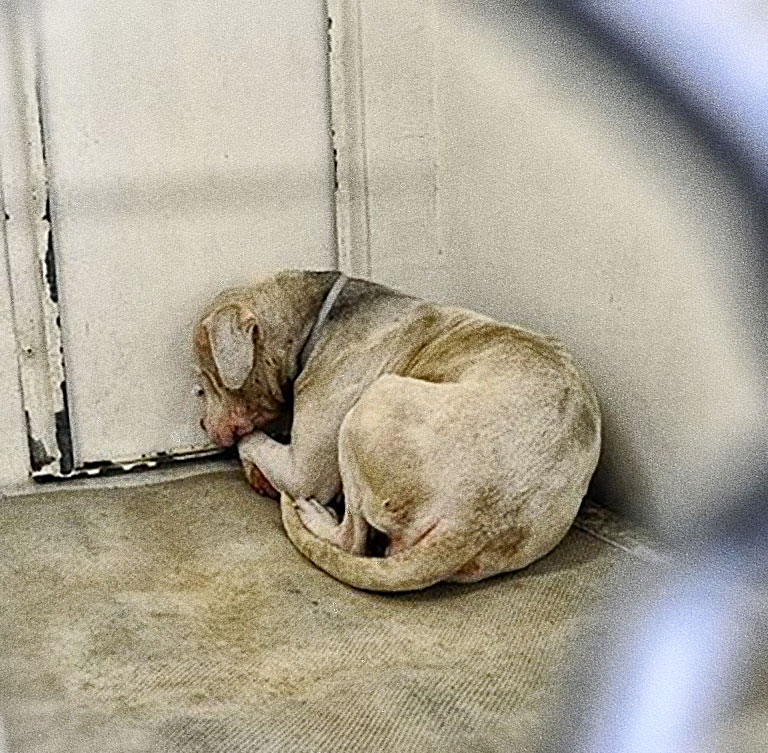
open-admission, limited-admission, and No-kill Shelters


Animal Shelters are classified into three categories: open-admission, limited-admission, and no-kill. Open-admission shelters (sometimes called “kill shelters”) are the most prevalent; most municipal or community shelters are this type. Open-admission means all animals who are brought to this facility are taken in. Many of these shelters are overcrowded and unsanitary. Communicable diseases are often a serious problem. Due to the steady stream of dogs coming in, ones that are not adopted out quickly or that possess health and/or behavioral problems are usually euthanized within a week in order to free up cage space for other dogs entering the shelter. A lucky few are saved by a rescue organization. Methods of euthanasia include lethal injection, decompression chamber, gas chamber, and electrocution. Lethal injection is considered the most humane method. Unfortunately, some municipal shelters in several states still euthanize dogs via the gas chamber, which has been proven to cause intense suffering in the last moments of the dogs’ lives. Municipal shelters are often staffed by governmental employees and appointees who have no animal training.
Limited-admission shelters, on the other hand, do not euthanize dogs to free up cage space; euthanasia only takes place for medical or behavioral reasons. Limited-admission shelters are usually private facilities. They must agree to take in a dog before it enters the facility, whether it be from an owner or an animal control/police officer, and pending cage space availability. Some limited-admission facilities only take on more adoptable dogs because of limited space and resources, while others specialize in rehabilitating and adopting out dogs in need of medical and behavioral assistance.
No-kill shelters thoroughly screen all dogs before allowing them in. These facilities will care for their dogs until they are adopted, no matter how long the process takes; they usually take extra care to ensure that the dog is healthy and well-adjusted before putting them up for adoption. Most no-kill shelters will even take dogs back who have not worked out in their adoptive homes and resume care until a new home is found. Because euthanasia is never an option, these facilities are very specific as to which dogs are admitted.

World-wide Stray Dog Crisis


There are an estimated 200 million stray dogs worldwide. Africa, Latin America, Eastern Europe, and Southeast Asia are the regions struggling most with this crisis. The greatest complication associated with the stray dog problem is the transmission of rabies. The tiniest nip by a stray dog can quickly become a matter of life and death. According to the World Health Organization, over 55,000 people die every year as a result of the disease, with over 99% of the fatalities resulting from a dog bite. About 95% of rabies deaths occur in either Africa or Southeast Asia. Thailand and Indonesia, in particular, struggle with large populations of stray dogs carrying the rabies virus. Many local and and national governments’ preferred method of dealing with the rabies problem is by killing stray dogs en masse via poisoning or shooting. Not only are these two methods inhumane, they have proven to be ineffectual, because they eliminate only the stronger, healthier dogs that are more prone to approach a human. The sick, weaker dogs who carry the rabies virus and avoid humans are less likely to be affected by these methods.
There are an estimated 200 million stray dogs worldwide
The rabies control strategy recommended by the World Health Organization, the World Society for the Protection of Animals (WSPA), the Alliance for Rabies Control, and the National Association of Public Health Veterinarians is vaccinating a minimum of 70% of the entire dog population in the affected areas. One of the most effective organizations working at ending the stray dog/rabies crisis in the developing world is Veterinarians Without Borders. They operate in many of the poorest countries of the world, neutering and vaccinating stray dogs against rabies. Their two-fold approach both reduces the stray dog population while diminishing the potential for rabies outbreaks. The World Health Organization is also working aggressively to end the crisis, supplying health and relief organizations with the rabies vaccine for local human populations as well as post-exposure treatment for those already infected. HSI’s Street Dog Welfare Program is also providing rabies control in developing countries, implementing spay/neuter programs and rabies vaccinations, as well as educating the public about the importance of humane treatment of street dogs.

Positive Change
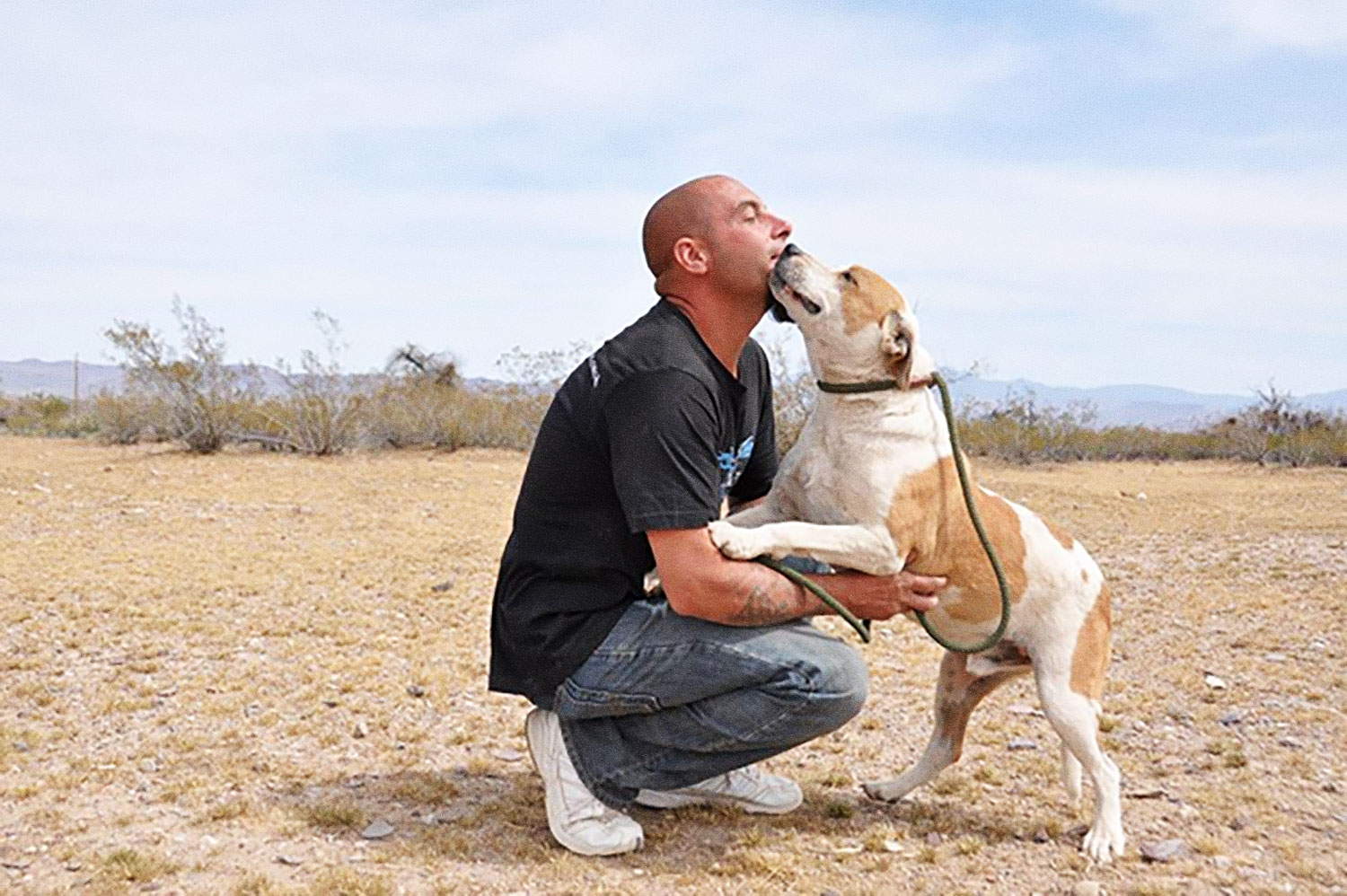
Over the last sixty-five years, tens of thousands of puppy mills have popped up all over the world. The result has been an overwhelming surplus of dogs without homes, millions of which are eventually euthanized in animal shelters. Sweeping public education of this issue needs to take place before the cycle can be broken. However, positive steps have been taken over the last 15 years to begin bringing the issue to light. Through the public awareness campaigns of national and regional animal welfare organizations, many people now know about the deplorable conditions inside puppy mills and the staggering number of dogs killed each year in animal shelters.
Through the public awareness campaigns of national and regional animal welfare organizations, many people now know about the deplorable conditions inside puppy mills
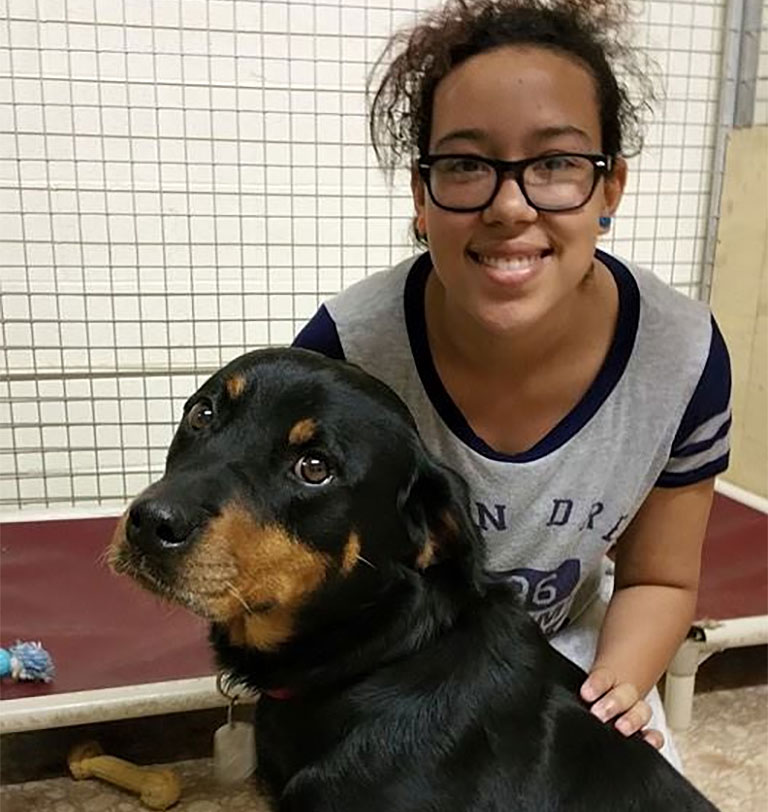
Cities and states restrict and ban the sale of puppy mill dogs

A growing number of cities and states have banned the sale of puppy mill dogs at retail stores. At the beginning of 2016, about 100 U.S. cities had forbidden them, but the number has approximately quadrupled since then. Some of the major cities that have enacted anti-puppy mill laws thus far are Atlanta, Salt Lake City, Los Angeles, West Hollywood, San Diego, Phoenix, Albuquerque, Austin, El Paso, Chicago, Boston, Philadelphia, Toronto, Toledo, Hoboken, Miami Beach, and Palm Beach. States are also following suit: California no longer allows pet store sales unless they come from rescues and shelters, and Maryland has banned pet store sales as well. Furthermore Illinois, Pennsylvania, New Hampshire and Wisconsin are now also considering legislation that would end the sale of puppy-mill dogs. In April 2021, Washington passed legislation that prevents new pet stores in the state from selling live dogs, and in May 2022 Dallas, Texas voted to ban the selling of dogs and cats in pet stores. In December 2022, New York the Puppy Mill Pipeline Bill was signed into law. This law, which goes into effect in 2024, will shut down the puppy mill pipeline, as pet shops will no longer be allowed to sell dogs (as well as cats and rabbits). Instead shelter and rescue animals will be adopted in their place. This is huge and hopefully more states and cities will continue to follow suit. Most recently Indianapolis banned the sale of commercially bred dogs, cats and rabbits, in a huge victory for companion animals.
State Legislation Regulating Puppy Mills

Because the Federal Animal Welfare Act of 1966 is insufficient to protect even the most basic needs of animals in breeding facilities, some animal welfare organizations and compassionate state level politicians have been successful at enacting puppy mill laws in several states. These statutes require periodic governmental inspections of each mill and require puppy mill owners to maintain an acceptable level of care for the dogs at all times. Despite strong opposition from dog breeding associations, farm bureaus, and the National Rifle Association (NRA), these laws have saved the lives of tens of thousands of dogs and increased the quality of life for countless others. In 2013, against overwhelming opposition, Ohio enacted an anti-puppy mill law that forced all puppy mills to register with the state. It also required all previous cruelty charges to be listed on each application, established a bond/insurance system for all mills and breeders, and required photos of kennels on all applications. Puppy mills and the state agricultural lobby tried the following year to reduce the requirements but were defeated. As a result of the law, animal welfare experts from Ohio have reported that, amazingly, over half of the smaller puppy mills have closed down due to the increased governmental oversight.
Currently, only 18 states have puppy mill laws in place, requiring licensing and inspections of all puppy mills. Sixteen states have weak puppy mill laws that require licensing fees but don’t require inspections of the facilities. Fourteen states, including Kentucky, Arkansas, Alabama, Mississippi, and Florida, which contain thousands of puppy mills, have no puppy mill laws in place at all.
Animal welfare experts from Ohio have reported that, amazingly, over half of the smaller puppy mills have closed down due to the increased governmental oversight
No-kill Shelter Movement

Many major American and Canadian cities are also working towards becoming “no-kill” cities, where no stray or shelter animals are killed. Through aggressive spay/neuter policies, active adoption programs and effective public campaigning, these communities are leading the way to a more compassionate future for all shelter animals. In 1999, 85% of all animals that came into Austin, Texas animal shelters were euthanized. Twelve years later, less than 9% of all private and public shelter animals are killed annually, a reduction of 76%! The city of San Francisco has been so successful that currently, only 2% of all animals in private and governmental shelters throughout the city are euthanized. Many other smaller cities and communities like Prescott, Wisconsin, Rosemount, Minnesota, Marquette, Michigan, Tompkins County, New York, and Shelby County, Kentucky have fully reached no-kill status. Some cities and organizations are developing creative methods to help achieve no-kill status. The Lick-My-Face-Challenge has raised tens of thousands of dollars for Target Zero, a non-for-profit that wants to make all American cities no-kill. In 2019 Delaware became the first no-kill state in the country.
In 1999, eighty-five percent of all animals that came into Austin, Texas animal shelters were euthanized. Twelve years later, less than 9% of all private and public shelter animals are killed annually, a reduction of seventy-six percent!
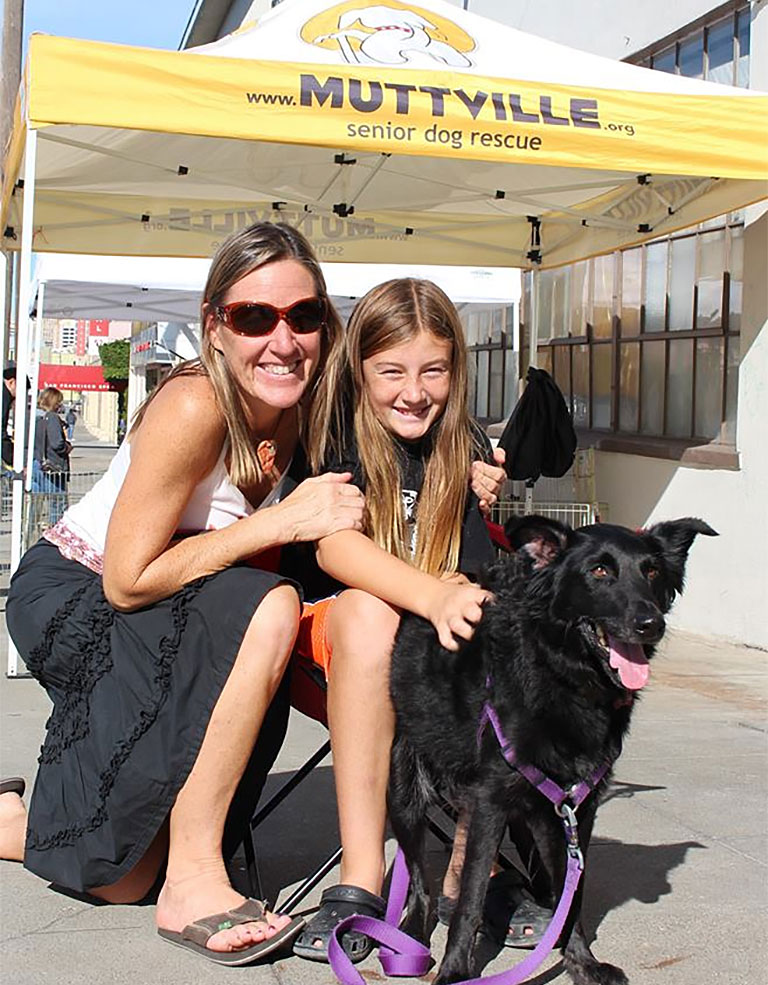
Puppy Mill Rescue Efforts

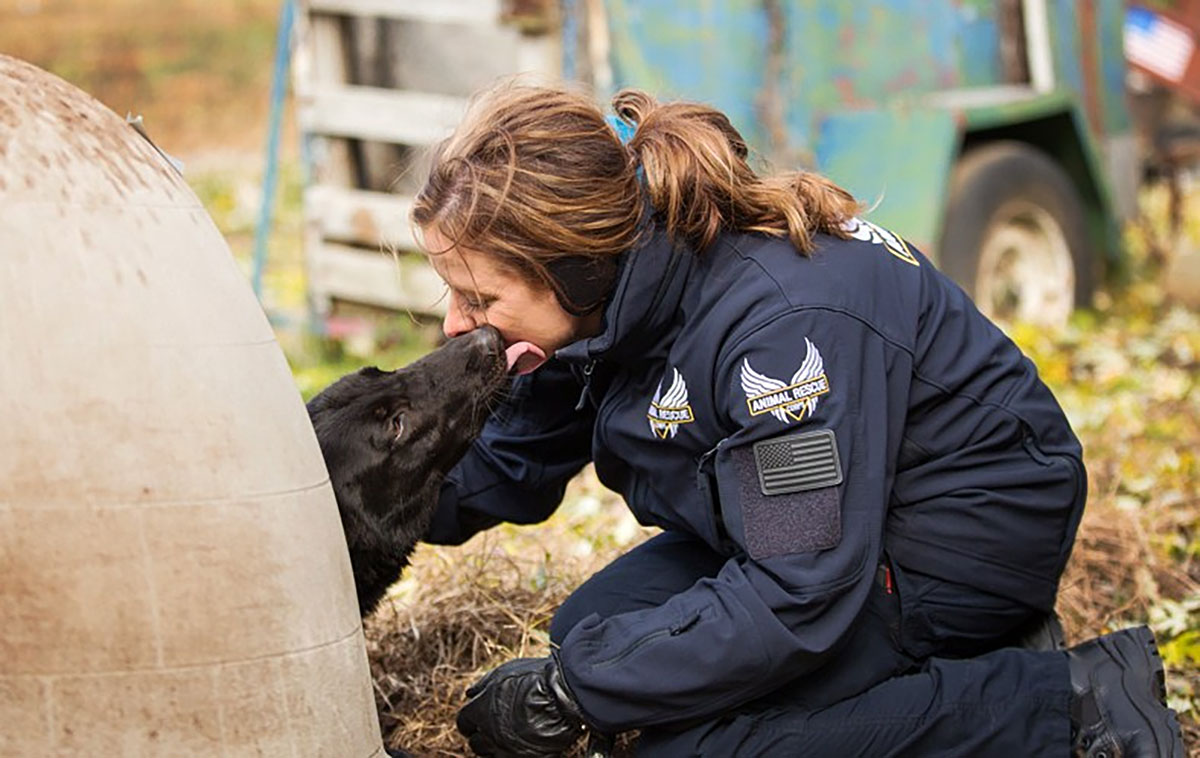
The American Society for the Prevention of Cruelty to Animals (ASPCA), Humane Society of the United States (HSUS), and Animal Rescue Corps participate in several puppy mill rescues a year, many of them large scale operations involving multiple animal welfare organizations, shelters, veterinarians and law enforcement personnel from surrounding areas. Often, the prosecutor’s office of the county where the puppy mill is located will request and provide authority to one of these organizations to investigate and recover the dogs while they secure legal charges against the puppy mill owners. As soon as the dogs have been recovered from the mill, the supervising organization coordinates all necessary medical treatment and hospitalization of the dogs. Once the dogs physically heal and complete their rehabilitation (sometimes taking weeks or even several months), short term fostering locations are then set up and the search for long term adoptive homes begins. From beginning to end, puppy mill rescues can take several months or longer to complete and can include testifying against the puppy mill owners in the court of law.
Public Awareness Campaigns

Recent increased public awareness of the puppy mill/animal shelter problem has been a result of the campaigning efforts of many local, regional, and national animal welfare organizations. The American Society of Prevention of Cruelty to Animals (ASPCA), People for the Ethical Treatment of Animals (PETA), and Last Chance for Animals (LCA) have created very effective national public awareness campaigns, educating the public about the importance of adopting pets from shelters instead of purchasing them online or from pet stores. Numerous actors and musicians have lent their celebrity to these campaigns, including Kathy Griffin, Kevin McHale, and Maria Menounos. Ellen DeGeneres has also been very active promoting shelter dog adoption. In partnership with the United States Postal Service, she created the Stamps to the Rescue campaign, which promoted the adoption of shelter pets. The campaign gave over 500,000 meals to dogs living in shelters.
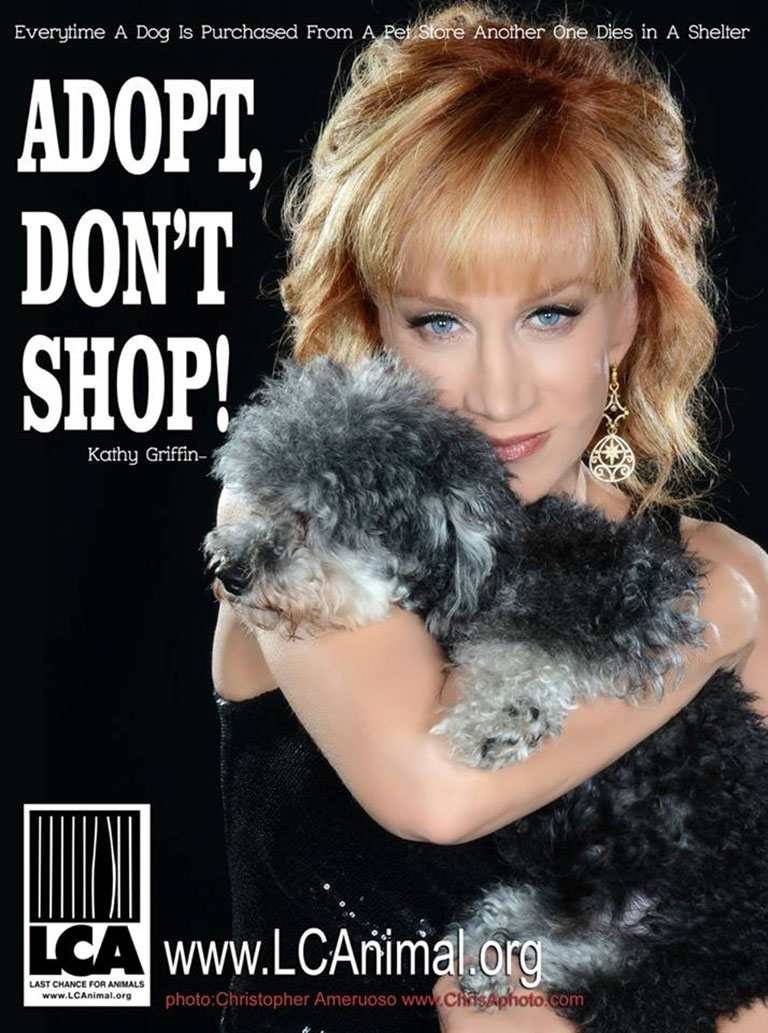
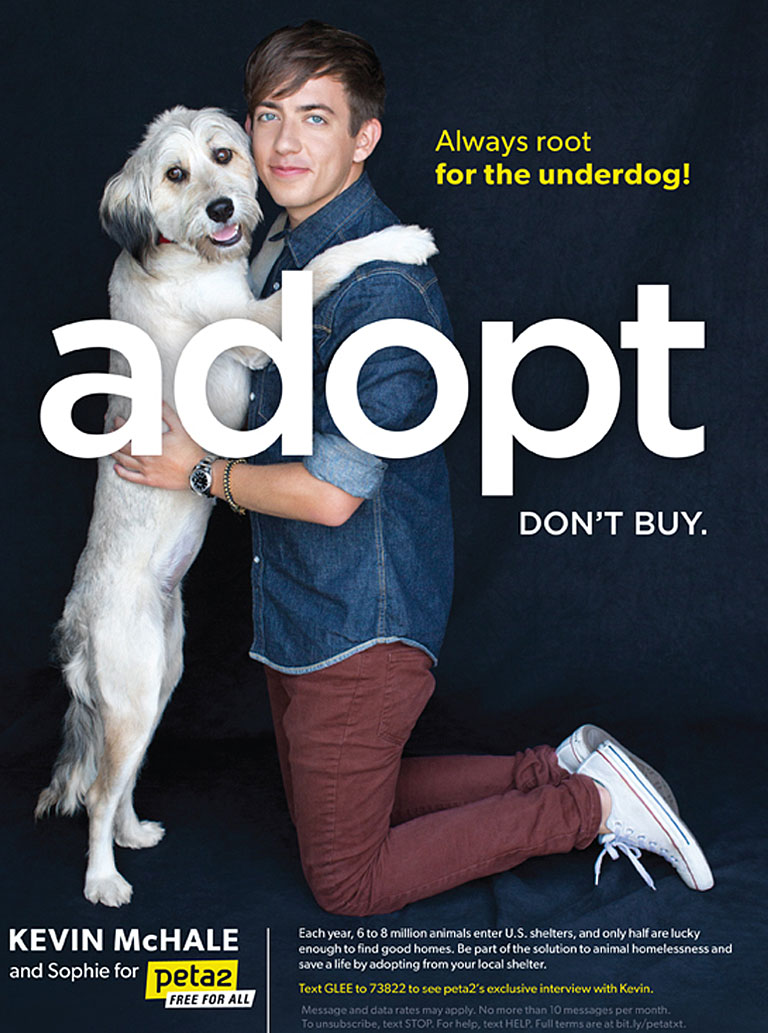
The highly successful HSUS Shelter Pet Project is a public campaign aimed at making animal shelters the first place people turn to when choosing a companion animal and ensuring that all healthy and treatable shelter animals find loving homes. The Shelter Pet Project is a result of a collaborative effort between HSUS, Maddie’s Fund, and the Ad Council. The motto for the Shelter Pet Project is “A person is the best thing to happen to a shelter pet. Be that person. Adopt.”
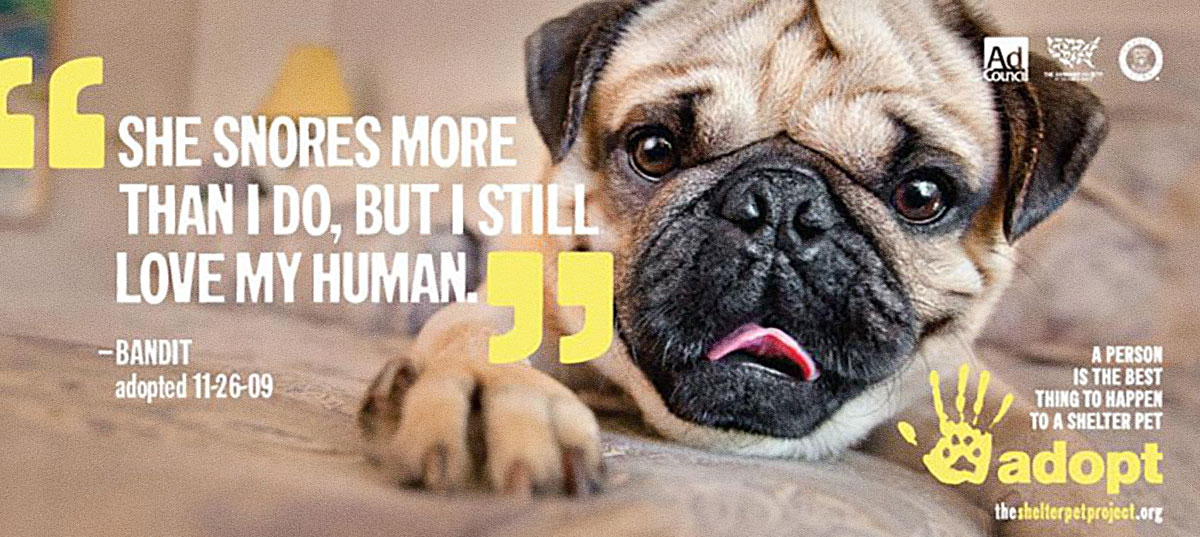
Many local and regional animal welfare organizations have also created very effective public education campaigns. In the Chicago area, The Puppy Mill Project has been instrumental in educating the public about responsible pet ownership and the puppy mill industry through billboards, walks, awareness days, and other social events. As a direct result of the efforts of The Puppy Mill Project and other local animal welfare organizations, the Chicago City Council in March 2014 outlawed the sale of dogs, cats and rabbits obtained from commercial breeding operations in all Chicago pet stores. All animals now must come from municipal shelters, rescue operations or humane societies.
In the heart of puppy mill country in Nebraska, Hearts United for Animals has fearlessly educated the regional population about the truth behind puppy mills. Hearts United for Animals staff and volunteers pass out educational materials at local events. They also supply materials and advice to animal welfare groups and individuals regarding the puppy mills. Hearts United for Animals has rescued over 10,000 dogs from puppy mills, manages a rescue sanctuary and operates a popular, low-cost spay/neuter clinic. As of 2012, over 10,000 cats and dogs have been spayed/neutered at the clinic.
Spay and Neuter Programs

Most shelters actively promote spay/neuter programs in order to reduce the number of stray dogs on the streets. Some shelters have veterinarians on staff to perform the operations within their own facilities, and nearly all shelters require that adopted dogs be spayed/neutered before being taken home. Just one unaltered female dog and her offspring can produce 67,000 puppies in six years. In seven years, one female cat and her offspring can produce a staggering 370,000 kittens. Animal welfare advocates and shelter directors consider spay/neuter programs and the abolition of puppy mills as the two most important factors in solving the stray dog overpopulation crisis. One study in San Francisco revealed that the city’s animal shelter took in 21% fewer pit bulls just 18 months after the passage of a law requiring the spay/neuter of all pit bulls within the city limits. Many shelters hold special spay/neuter events during the course of the year, reaching out to the pet owners in their communities. One such event is World Spay Day, which is usually held on the last Tuesday of each February. In 2014, 700 World Spay Day events were held in 41 countries, as well as in all 50 U.S. states, and over 68,000 animals were spayed/neutered.
Just one unaltered female dog and her offspring can produce 67,000 puppies in six years
Rescues

Rescue dog organizations are made up of passionate members and volunteers who care for the dogs until a suitable permanent home can be found. These organizations are committed to a nokill policy and often take traditionally un-adoptable dogs from shelters and rehabilitate them before adopting them out. Some rescues, such as Old Dog Haven, specialize in adopting out older dogs from municipal shelters whose age would likely cause them to be euthanized otherwise. The Beagle Freedom Project specializes in rehabilitating and adopting out dogs, usually beagles, and other animals who have been used in scientific laboratory experimentation. Other rescue groups focus on specific dog breeds. Rescues are usually volunteer-run organizations whose budgets are dependent on donations and adoption fees. The adoption fees often fail to cover the costs involved in the rescue, which can include travel, veterinary care, vaccinations, food, spaying/neutering, training, and rehabilitation.
Many new, creative methods are being developed to get shelter animals adopted. One fresh idea is the The Dog Cafe, which opened in Los Angeles in April of 2016. This novel approach allows patrons to sip on their favorite beverage while meeting dogs from local shelters and rescues who are available for adoption. Another method gaining steam is placing unadopted shelter dogs and cats into programs that put the animals to work. Shelter Dogs with Jobs, a Tampa Bay nonprofit, trains and does job placement for unadopted dogs in fields ranging from police work to therapy assistance. In exchange for the dogs’ services, all that is required is a home with love, food and care. In Washington state, SpokAnimal has paired 1,770 feral cats with farms and warehouses in the rural area of Spokane, to help control the mice population. Clear the Shelters has helped adopt out over 67,000 shelter dogs and cats since it began in 2014.
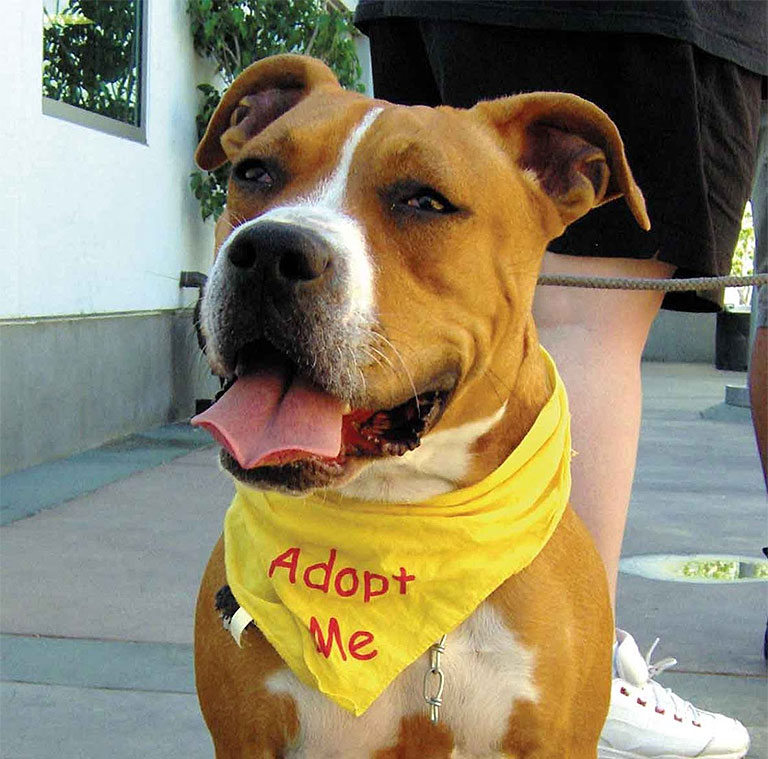
Momentum is Building

Great strides have been made in the last fifteen years concerning the puppy mill/animal shelter issue. Millions of people have learned about the horrific conditions in puppy mills and the plight of dogs in shelters. Euthanasia of shelter animals in the United States has dropped from 15 million in 1970 to around 1.5 million in 2019. However, 1.5 million is still a staggering number of animals needlessly killed. Only 25% of all dogs in American homes were adopted from an animal shelter; the rest came from puppy mills or breeders. Anti-puppy mill laws need to be enacted and further public education concerning animal shelters needs to take place until all dogs have a loving family to call their own.
Euthanasia of shelter animals in the United States has dropped from 15 million in 1970 to around 1.5 million in 2019
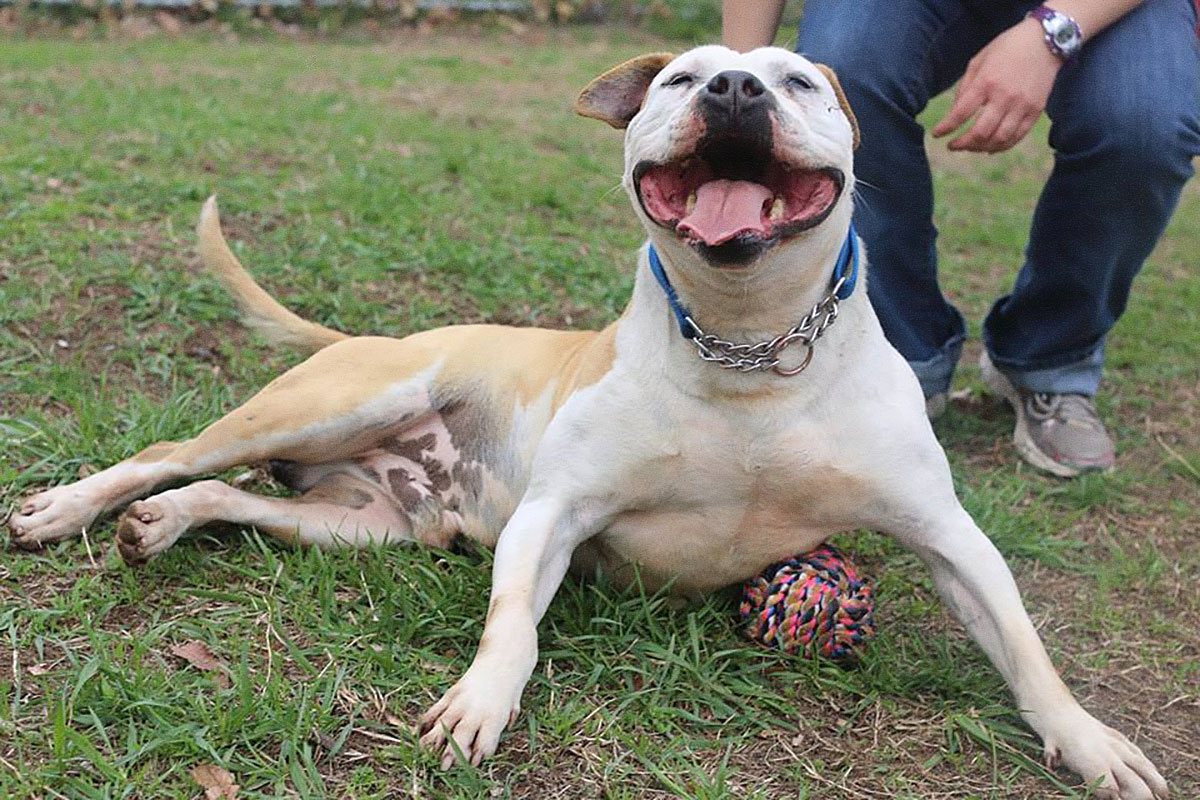

Action
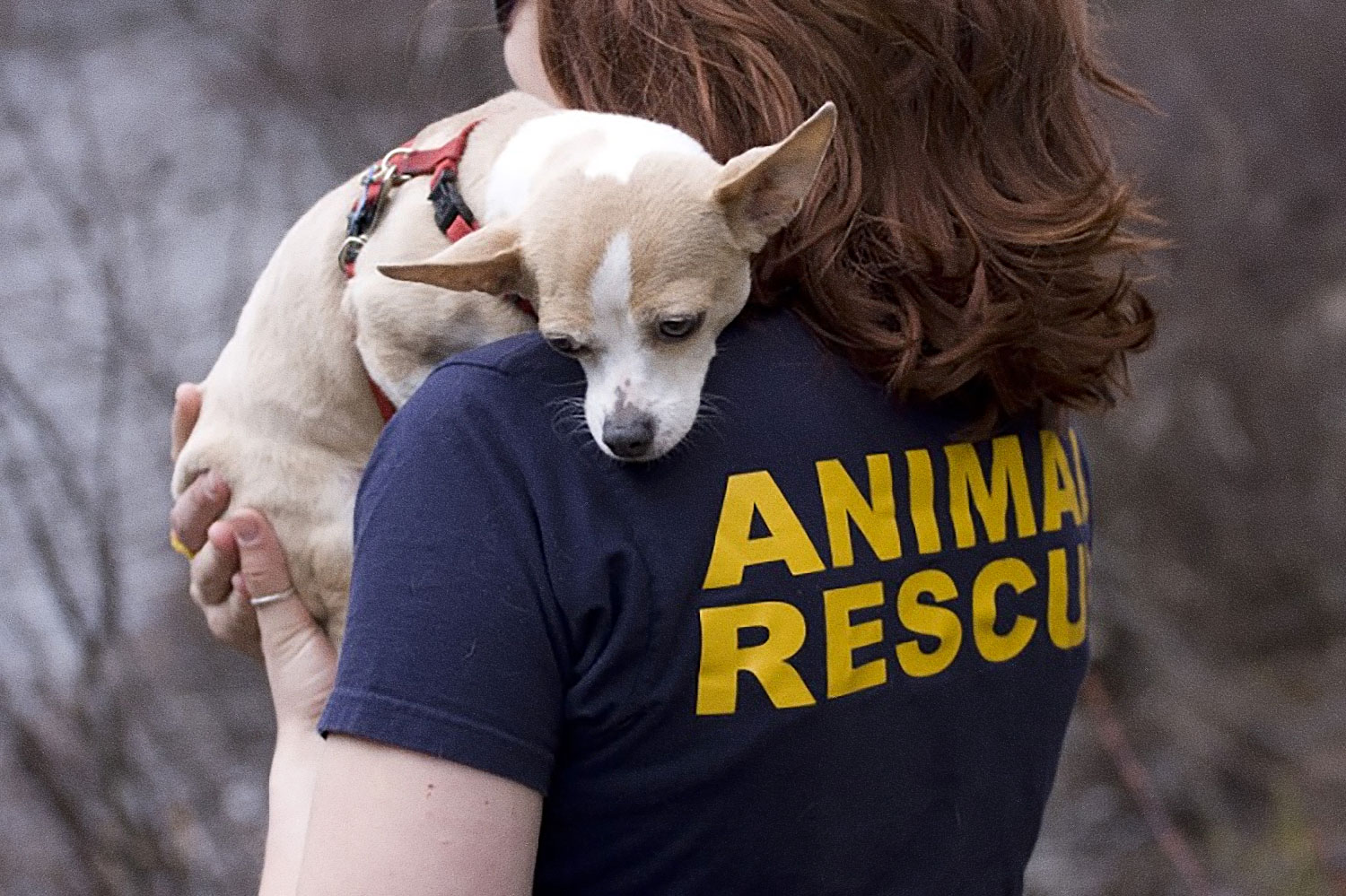
A vocal grassroots movement exposing the puppy mill trade and advocating for dogs in animal shelters is currently underway. No matter where you live, you can be a part of it. Numerous animal welfare groups, many devoted solely to the puppy mill issue, are working tirelessly to bring an end to the horrific industry through public education and legislative advocacy. Many shelters are in need of volunteers to help care for the dogs and find them loving, adoptive homes. By taking action on behalf of these animals who cannot speak for themselves, you become an important part of an effort that will, hopefully, make puppy mills a thing of the past. Here are some ways you can take action:
Do not purchase dogs from pet stores or online. Adopt from a shelter

Looking to Adopt?
Click here for The Ultimate Guide to Adopting a Dog, by Breed Advisor.
PLEASE CONTACT YOUR U.S. REPRESENTATIVE TO SUPPORT LEGISLATION THAT WILL GIVE NEEDED PROTECTIONS FOR PUPPY MILL DOGS

Please contact your U.S. Representative and ask them to cosponsor the Puppy Protection Act which will improve the life of dogs kept in USDA licensed breeding facilities. The conditions on these puppy mills are inhumane and horrific ,and the legislation will improve their quality of life.If passed it will require better standards of care, including increased enclosure sizes, solid flooring, exercise, feeding twice per day, socialization, increased veterinary care, and better protection from extreme temperatures. It will also impose breeding limits and ensure that breeders make reasonable efforts to rehome retired dogs instead of discarding or killing them.
In addition urge them to take action and support The Better CARE for Animals Act(H.R. 5041/S. 2555), which will help give the DOJ more enforcement tools to work with the USDA to shut down puppy mills that repeatedly violate the Animal Welfare Act. This would hold puppy mills accountable, as hundreds of them currently violate it, as it is not properly enforced
Goldie’s Act 2024 is another important piece of legislation. Operation Revocation, a mission that was carried out by the collaborative efforts of Animal Rescue Corps, ASPCA, Animal Rescue League of Iowa among others, rescued over 500 dogs from a puppy mill in Iowa. Unfortunately Goldie, one of the dogs from the puppy mill did not survive, but she did inspire this important bill. If the legislation passes it will close loopholes in the Animal Welfare Act, and strengthen requirements for USDA inspectors who observe cruelty and abuse.
All three pieces of legislation offer needed protections that are way overdue, and needed now. Please reach out to your representatives and ask them to support these important bills.
Support organizations that are working to shut down puppy mills and promote animal shelter adoption

National Mill Dog Rescue
National Mill Dog Rescue (NMDR) is one of the most vocal and effective puppy mill advocacy and rescue organizations in the world. Executive Director Theresa Strader founded National Mill Dog Rescue after rescuing a severely abused Italian greyhound breeding mother named Lilly from a puppy mill in 2007. Lilly had lived in deplorable conditions for seven years and was suffering from multiple physical deformative conditions due to a lifetime of continual impregnation and neglect. After fifteen months of experiencing love and happiness in Strader’s home, Lilly passed away peacefully in the arms of Strader’s husband. Lilly’s courage and forgiveness left an indelible mark on Strader, who founded National Mill Dog Rescue in her memory. Her legacy lives on in the tireless work done by the National Mill Dog Rescue volunteers and staff.
National Mill Dog Rescue staff and volunteers travel throughout the American midwest and rescue approximately 1,500 discarded puppy mill breeding dogs each year. Since 2007, they have rescued, rehabilitated, and adopted out over 10,000 puppy mill dogs mostly breeding mothers and unwanted puppies. By providing extensive medical treatment, rehabilitation, socialization and adoption services, each and every dog rescued by National Mill Dog Rescue has become a treasured companion animal in a loving home. Their long-range goal is to obtain the financial resources necessary to save every puppy mill dog in need until all puppy mills are closed permanently. National Mill Dog Rescue also vocally opposes the pet stores that front for the puppy mills and actively promotes rescue and shelter adoptions. They educate the public about the cruelty of the commercial dog breeding industry through public events, adoption fairs, and school appearances. For a more detailed look at the tireless work National Mill Dog Rescue does for puppy mill dogs, check out their webpage.They rely solely upon donor support for their ongoing advocacy and rescue efforts. Supporting National Mill Dog Rescue financially is a very practical way to help put an end to the puppy mill industry. If you are interested in volunteering for National Mill Dog Rescue, visit the volunteer information page on their website.
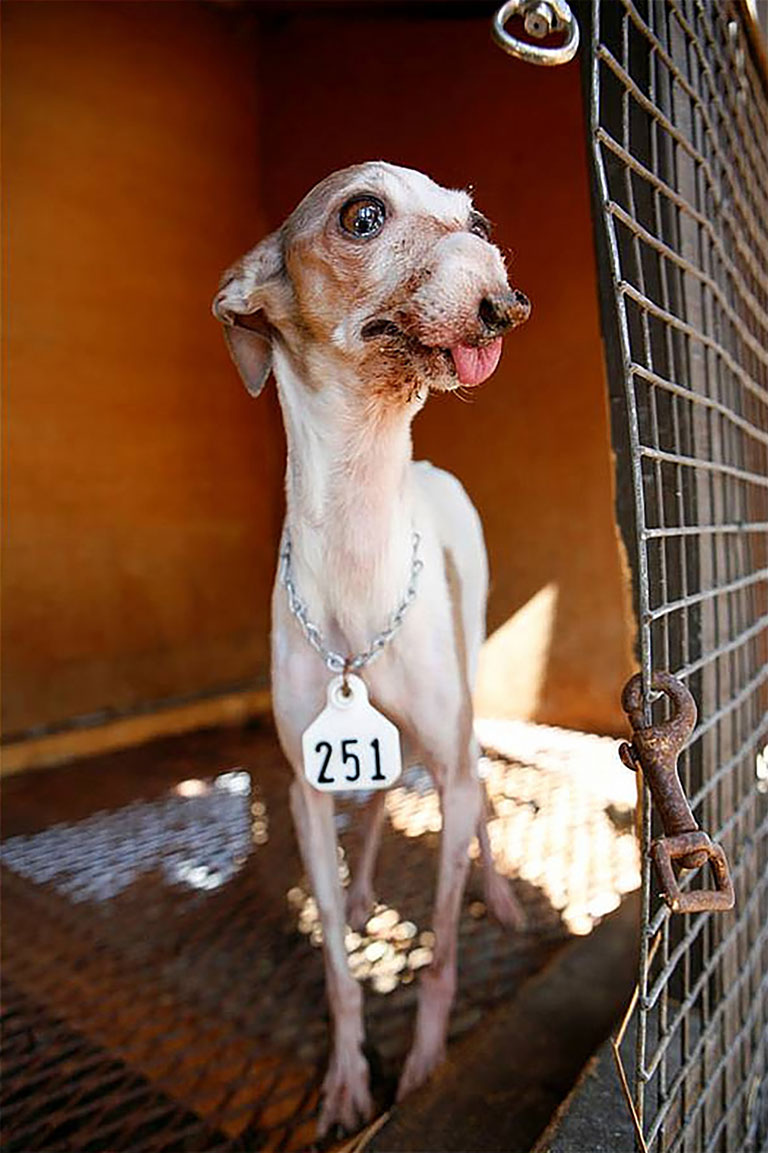
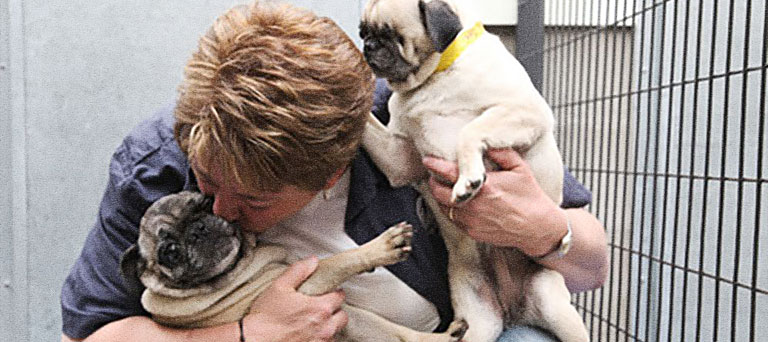
The Humane Society of the United States (HSUS)
Since its founding in 1954, the Humane Society of the United States (HSUS) has focused a majority of its time and energy on the reduction of the U.S.’s homeless dog population, the regulation of pet shops and an end to the commercial pet breeding/puppy mill industry. Ending puppy mills is one of the major campaigns of the HSUS and they have an entire division, the Puppy Mill Task Force, designated to conduct puppy mill investigations. The task force has helped law enforcement agencies confiscate more than 35,000 animals from puppy mills since 2007. They also publish Animal Sheltering, a bi-monthly magazine for animal shelter volunteers and professionals, which focuses on effective strategies to promote rescue and adoption. The HSUS aids numerous smaller shelters and rescues throughout the United States with supplies and monetary/professional support. The organization is also very active in lobbying for anti-puppy mill laws at the state and federal levels and has been instrumental in the passage of many of the state laws currently in place.
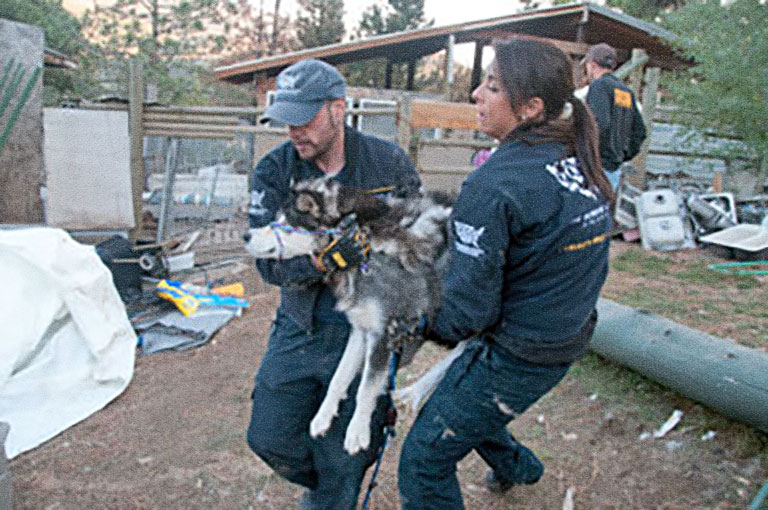
American Society for the Prevention of Cruelty to Animals (ASPCA)
The American Society for the Prevention of Cruelty to Animals (ASPCA) devotes a substantial portion of their educational public outreach to puppy mill awareness and animal shelter advocacy.
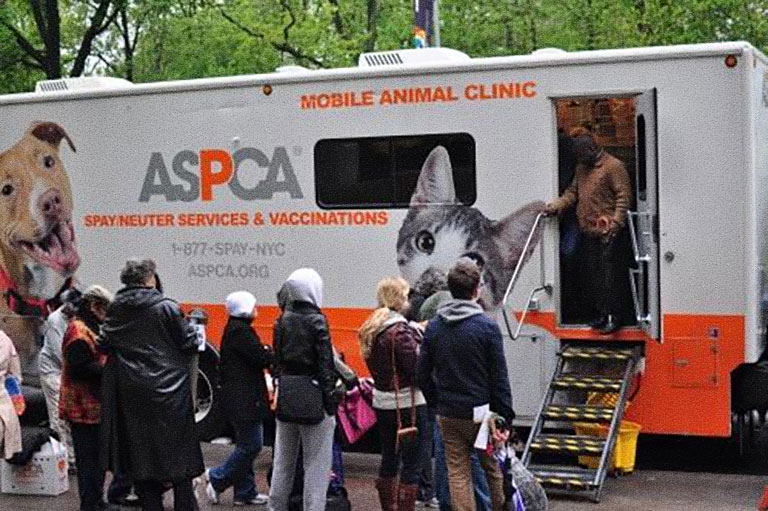
For over 100 years, one of the primary missions of the ASPCA has been advocating on behalf of abused and neglected dogs. They own and operate a 8,000-square-foot state-of-the-art adoption center in New York City that facilitates thousands of adoptions each year. The adoption portal on the website connects potential adopters with available dogs from shelters all around the country. The innovative ASPCA “Meet Your Match Canine-ality” Adoption Program matches adopters with the best possible dog by assessing each dog’s personality/activity level and matching it with the most appropriate adopter (which is determined through a survey describing the person’s lifestyle and preferences). They also run the No Pet Store Puppies website/campaign, which exposes the horrors of the puppy mill industry to thousands of visitors yearly. The ASPCA is also very active in advocating spaying/neutering to help combat dog overpopulation. They provide effective low-cost spay/neuter programs and spay-mobiles in New York City and Los Angeles for low-income individuals. Additionally, they supply a low cost spay/neuter portal on their website to help people in other areas of the United States find affordable options near them.
Grassroots Puppy Mill/Animal Shelter Organizations
In addition to National Mill Dog Rescue, HSUS, and ASPCA, many other worthy puppy mill awareness/animal shelter advocacy organizations are at the forefront of educating the public about puppy mills and animal shelters. Some advocate anti-puppy mill legislation at the state and local levels. Most of these organizations are active in rescue and adoption programs. Shelter Pet Project, Hearts United for Animals, WolfSpirit’s Toy Breed Puppymill Rescue, Puppy Mill Project, Animal Rescue Corps, Maddie’s Fund, and Pup Aid are a few of the groups working on behalf of shelter and puppy mill dogs in need of rescue. These groups are funded by donors and also have many hands-on opportunities for volunteers.
Foster a shelter animal in your home


Fostering a shelter animal in your home is a win-win for all involved. For the animal, who has spent their life unwanted and uncared for, the chance to live in a warm, loving home is priceless. The experience allows them to develop important interaction skills with humans and other animals necessary for adoption. For the fosterers, the experience brings the satisfaction of being an integral part of the animal’s rehabilitation. Fostering a shelter animal teaches children many key values like the responsibility involved in caring for another’s well being, the importance of sticking to commitments, and how to see things from another creature’s perspective.
Chill Out! Decompression Tips for New Foster Dogs
Advice for Fostering a Puppy Mill Rescue
Volunteer at your local animal shelter

Almost all animal shelters utilize volunteers for a variety of important tasks. Volunteers are often an integral part of the day-to-day operations and many shelters cannot operate without them. A single shelter can house hundreds of animals and can rarely afford hired help. Though volunteers don’t get a paycheck, the continuous tail wags and affection they receive from the thankful dogs are ample reward. In open-admission municipal shelters, the volunteers are often the only friendly human contact the dogs will experience in their lifetimes. Duties performed by volunteers include feeding and taking the dogs for walks, grooming, cleaning out cages, socializing dogs with other dogs, washing blankets, listing dogs on pet adoption websites, and working with prospective adopters. Some shelters allow volunteers to foster animals in their own homes temporarily until the dogs can be adopted out permanently.
To find shelters in your area, visit the Shelter Pet Project. To find out about other volunteer opportunities in your community, visit Volunteer Match, where many shelters and animal rescue organizations post opportunities. You can search by term (i.e. “animals”) and your ZIP code to find organizations near you. If you still don’t find something that is convenient, simply contact your municipal town hall and ask them what opportunities exist to help local community animals.
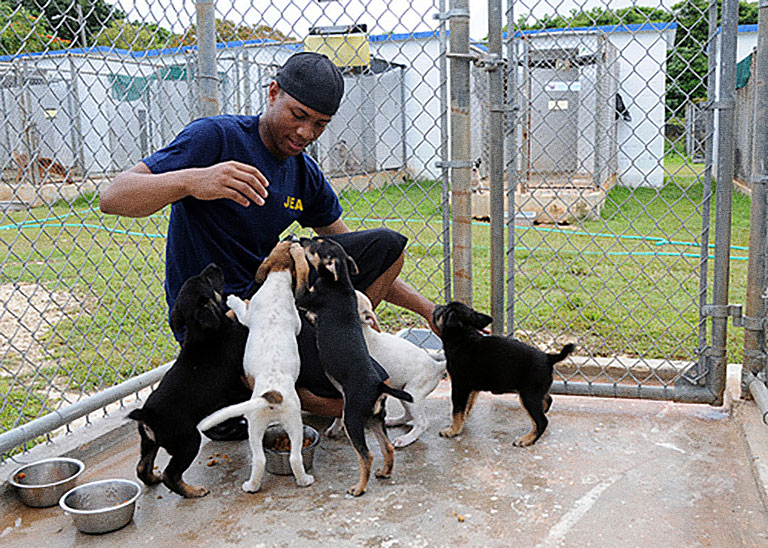
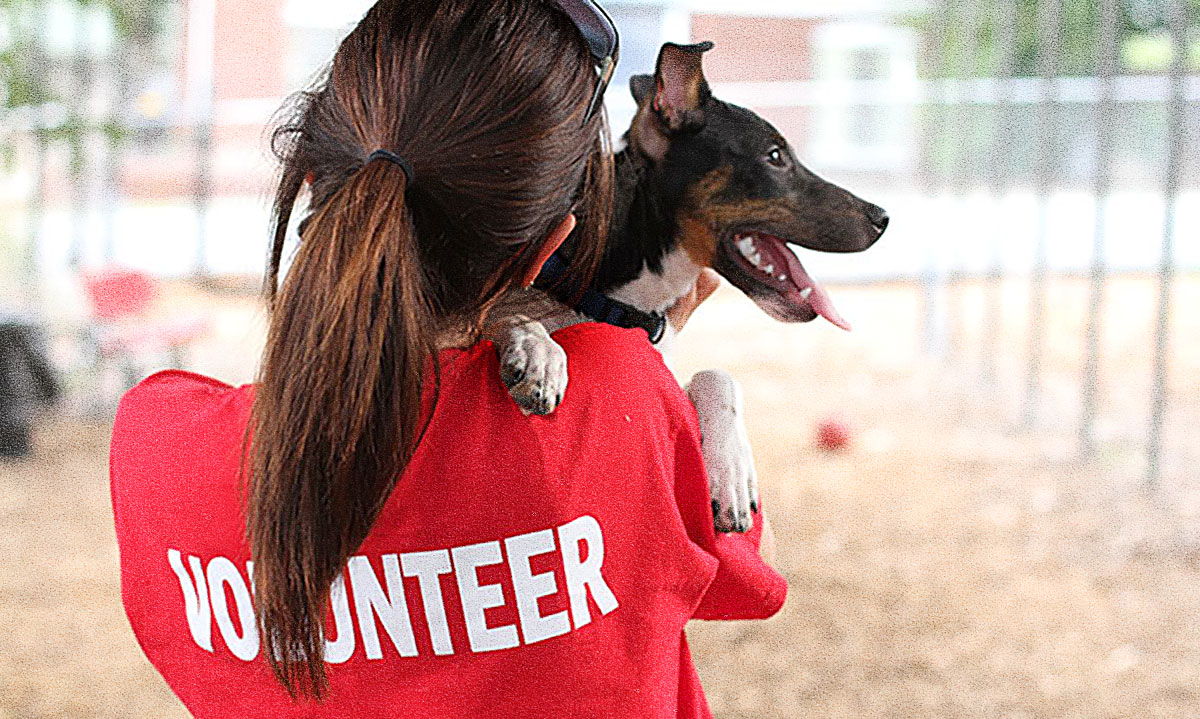
Educate friends, family and your community about puppy mills and animal shelters

The greatest tool to help end the puppy mill/shelter crisis is education. Most well-intentioned people simply don’t know they are contributing to the problem when they purchase a purebred dog from a pet store or online source. Many of these people would adopt a dog from a rescue if they knew the truth behind their purchase. The importance of concerned advocates educating their family and friends cannot be overstated. Puppy mills and shelter overpopulation is a great topic for school reports and presentations and is an excellent way to inform your friends and instructors. Passing out printed information about these issues at local fairs and events is another great approach. The sooner people are informed about puppy mills, the more quickly they will close down.
Most well-intentioned people simply don’t know they are contributing to the problem when they purchase a purebred dog from a pet store or online source
Post information about puppy mills and animal shelters on social media sites

Most animal shelter and puppy mill rescue and advocacy organizations have Facebook, Instagram, and Twitter accounts. Follow their pages and share photos and posts with your friends and family, keeping them up-to-date on puppy mill rescues, pending anti-puppy mill legislation, and local animal shelter news and advocacy programs. The Humane Society of the United States (HSUS) annually releases a list of the 100 worst puppy mills in America. The report, The Horrible Hundred, brings to light the horrific conditions the dogs are kept in at these mills, and make people aware of the worst offenders in this cruel industry.

Facts
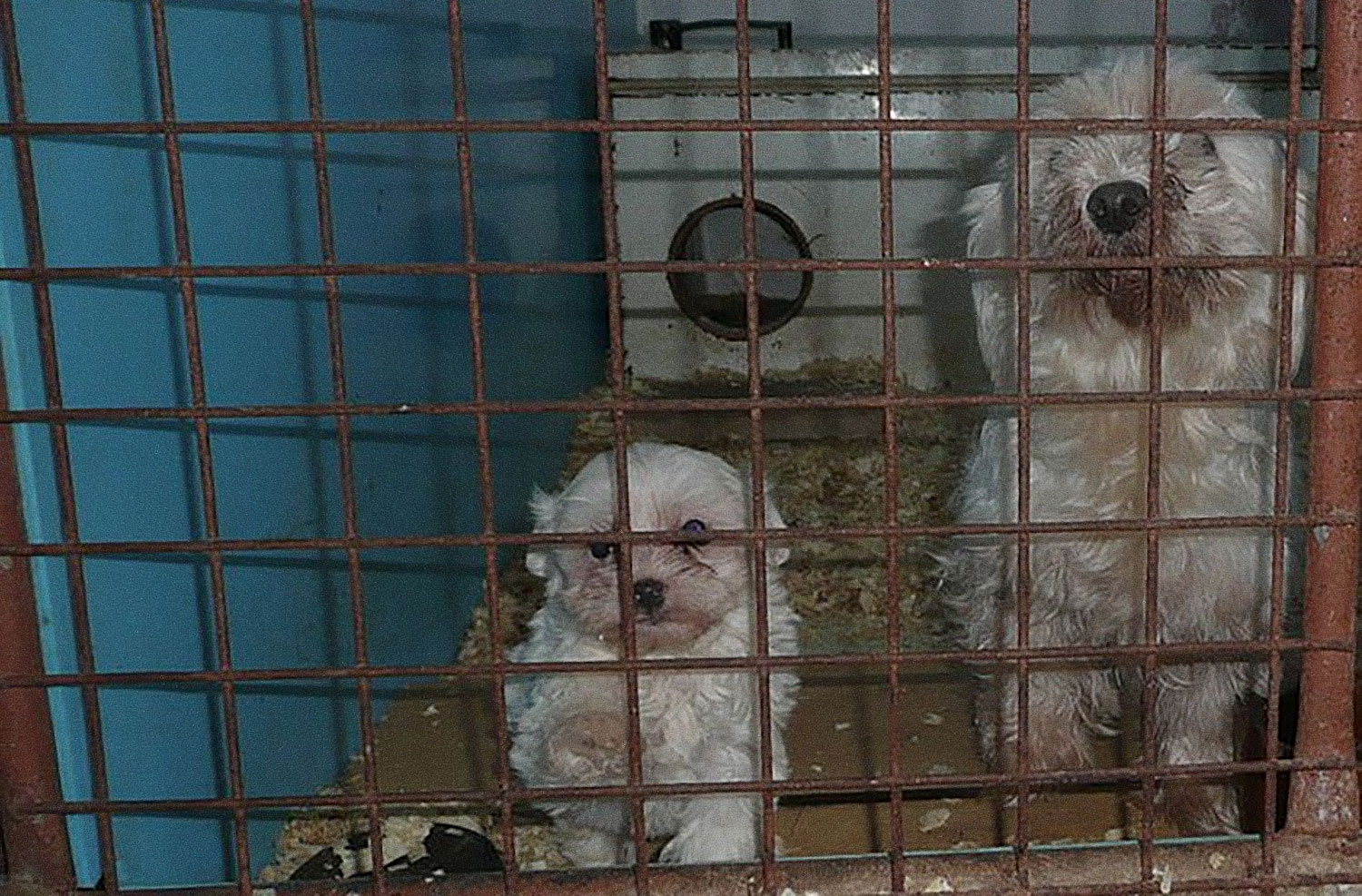
Only one out of every ten dogs born in the United States will find a permanent home. Each year, approximately 3.5 million unwanted dogs end up in animal shelters, many originating from breeding facilities known as “puppy mills.” Only 25 out of every 100 companion dogs in the United States are adopted from animal shelters.
According to estimates, there are nearly 10,000 puppy mills that produce upwards of two million dogs a year in the United States. Puppy mills have also become increasingly prevalent in Asia, focusing on small “designer” or “teacup” breeds. South Korea, in particular, is home to approximately 4,000 puppy mills that house over 1.5 million dogs, a portion of which are exported to the United States.
There are approximately 13,600 animal shelters in the United States that house roughly 4 million dogs.
About one million adult breeder dogs are confined in puppy mills throughout the United States. Almost every puppy found in a pet store has a mother and father who have lived their entire lives in a tiny cage at a puppy mill, often devoid of any human contact and affection. Female breeder dogs live on average a mere four to five years.
Dogs adopted from animal shelters are proven to be healthier than dogs produced in breeding facilities or puppy mills. Mixed-breed shelter dogs and puppies are less prone to genetic disease than purebred dogs, due to a more diverse hereditary makeup. Even the most reputable breeding facilities produce puppies with higher incidence of genetic diseases like hip dysplasia, epilepsy, and glaucoma as compared to mixed-breed puppies found in a shelter.
The highest concentration of puppy mills in the United States is in the Midwest, but there are also many found in Pennsylvania and upstate New York. There are more puppy mills in Missouri than any other state in the country. Puppy mills are very prevalent among Amish and Mennonite farmers, in particular in Lancaster County, Pennsylvania and parts of Wisconsin.
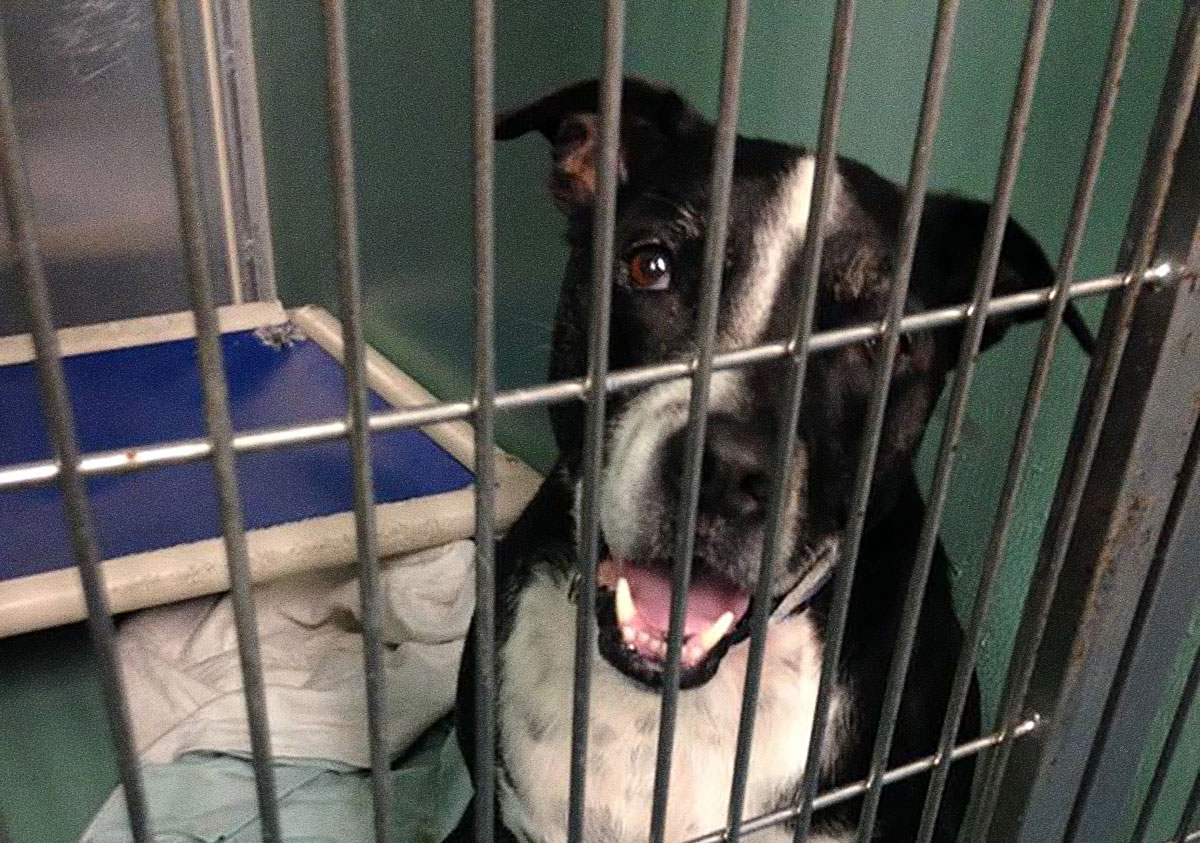

Explore

See

Many inspired activists have devoted their entire lives to rescuing dogs from puppy mills, closing the mills down and educating people about how to put an end to this inhumane trade. Others have spent countless hours promoting animal shelter adoption and searching for loving homes for thousands of homeless dogs. View these videos and photographs which show how everyday people have made a difference. Countless other rescue videos and photos are available online; Hope For Paws alone has over 200 rescue videos available for viewing.
Jordan’s Journey
Witness the rescue and recovery of Jordan, a brave little dog who survived being severely abused and thrown into a canal.
Gratitude of a Rescued Dog
Watch this touching footage of Edie, who was saved by Hope For Paws Animal Rescue just hours before euthanasia.
Before and After
In the following photos, witness the transformation of these rescued dogs who have been given a new lease on life in loving homes.
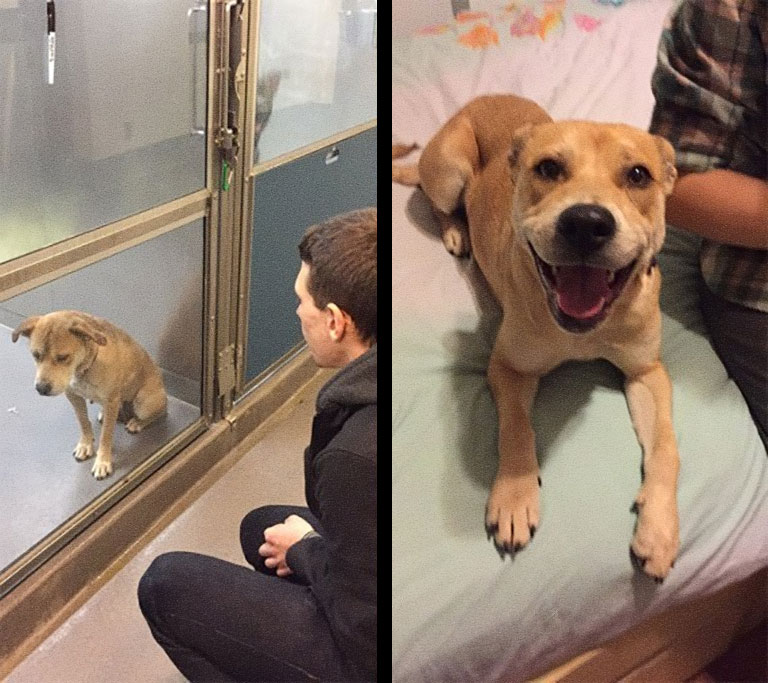

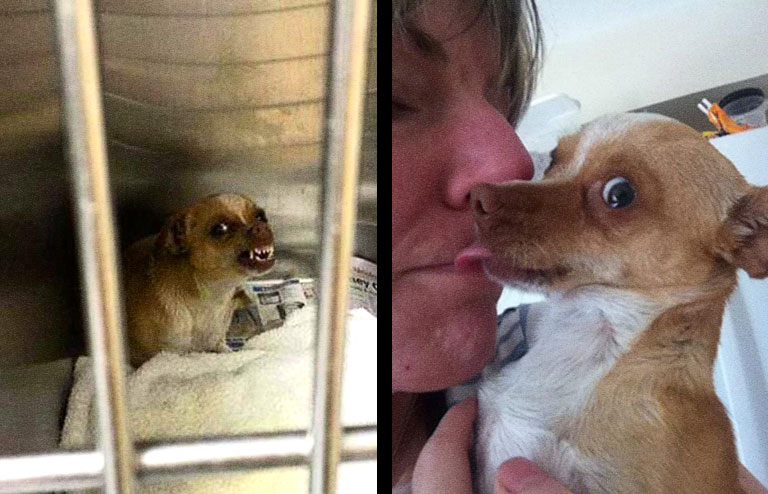
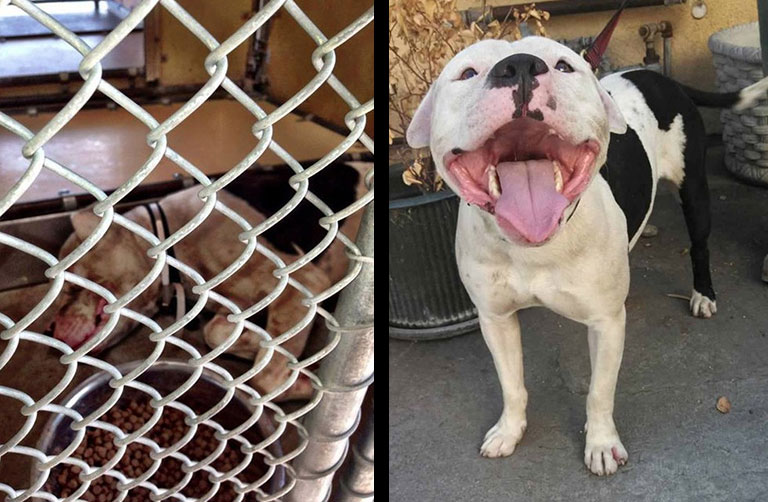
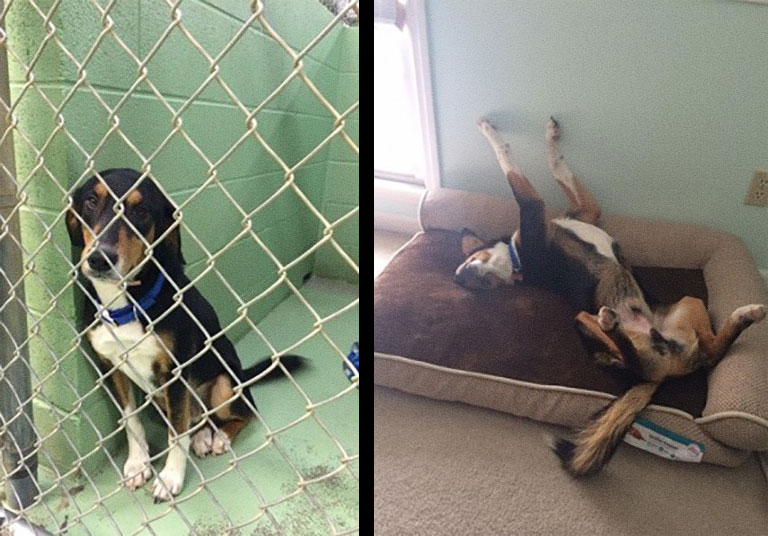
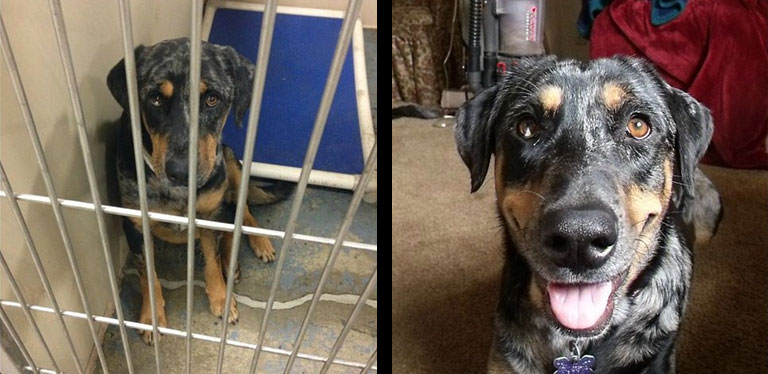

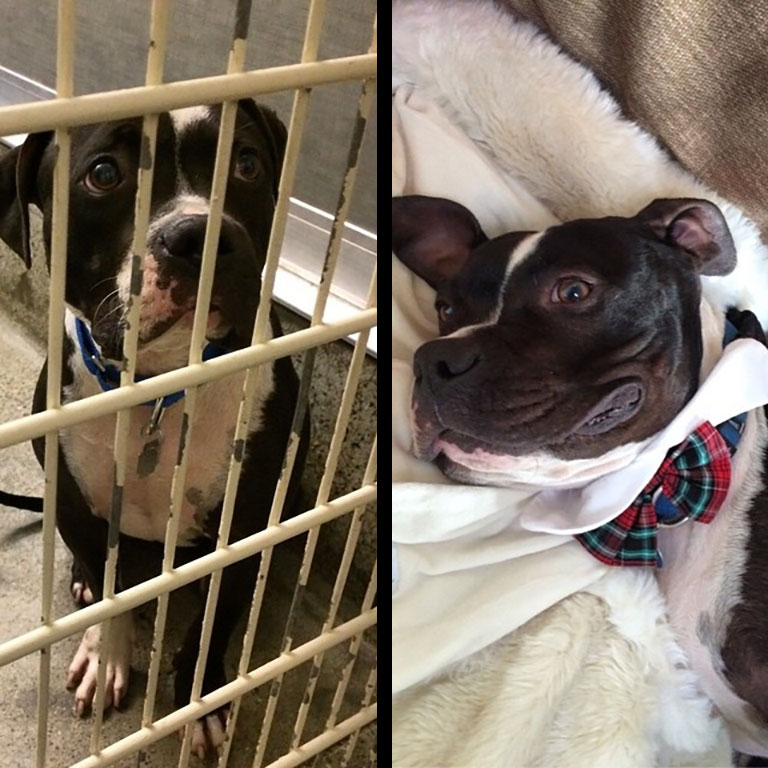
Freedom Rides
Take a look at these rescued dogs on their way home for the first time after being adopted from the animal shelter.
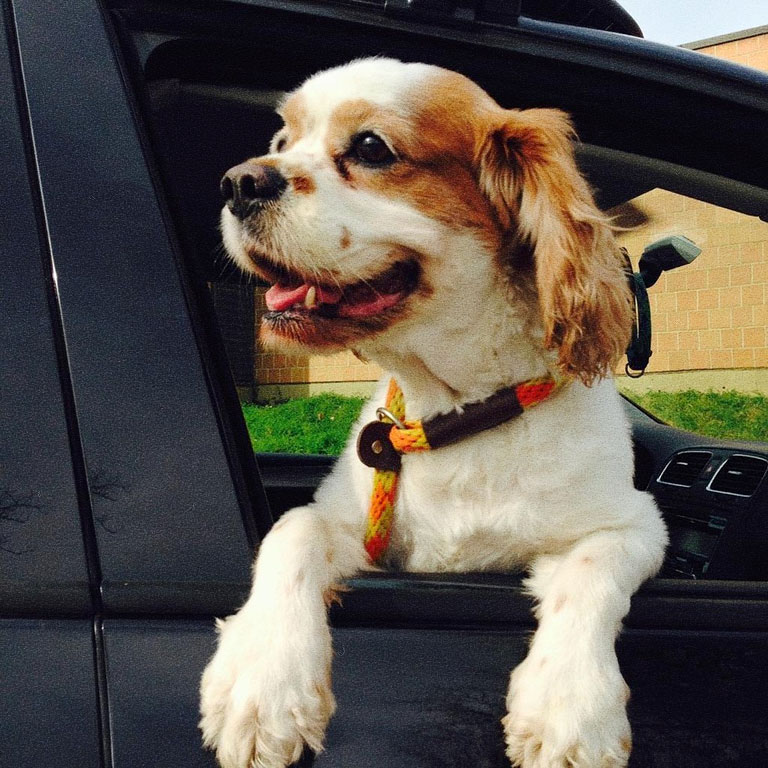

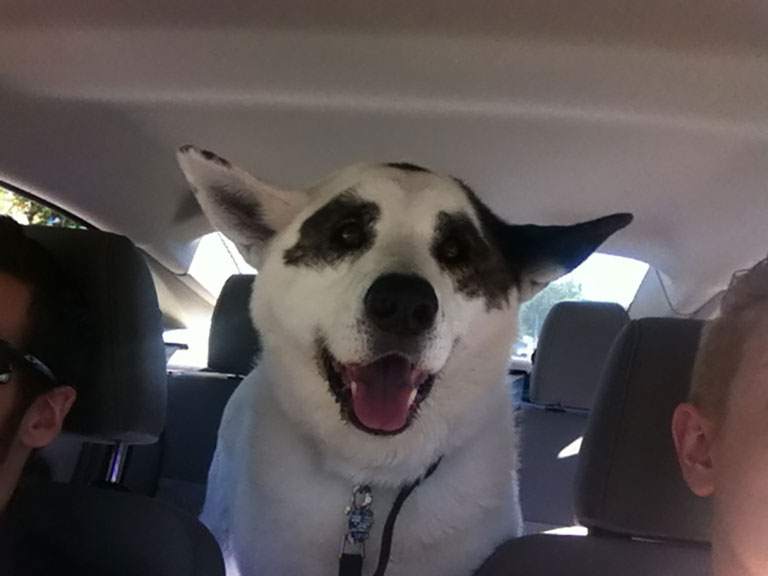

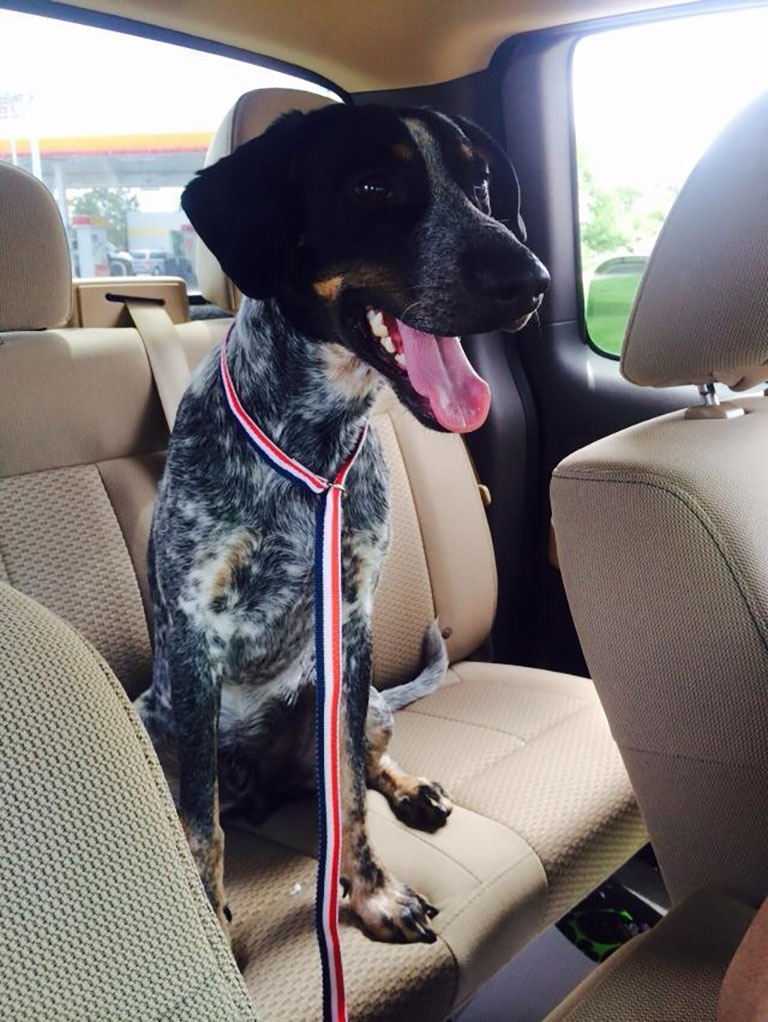
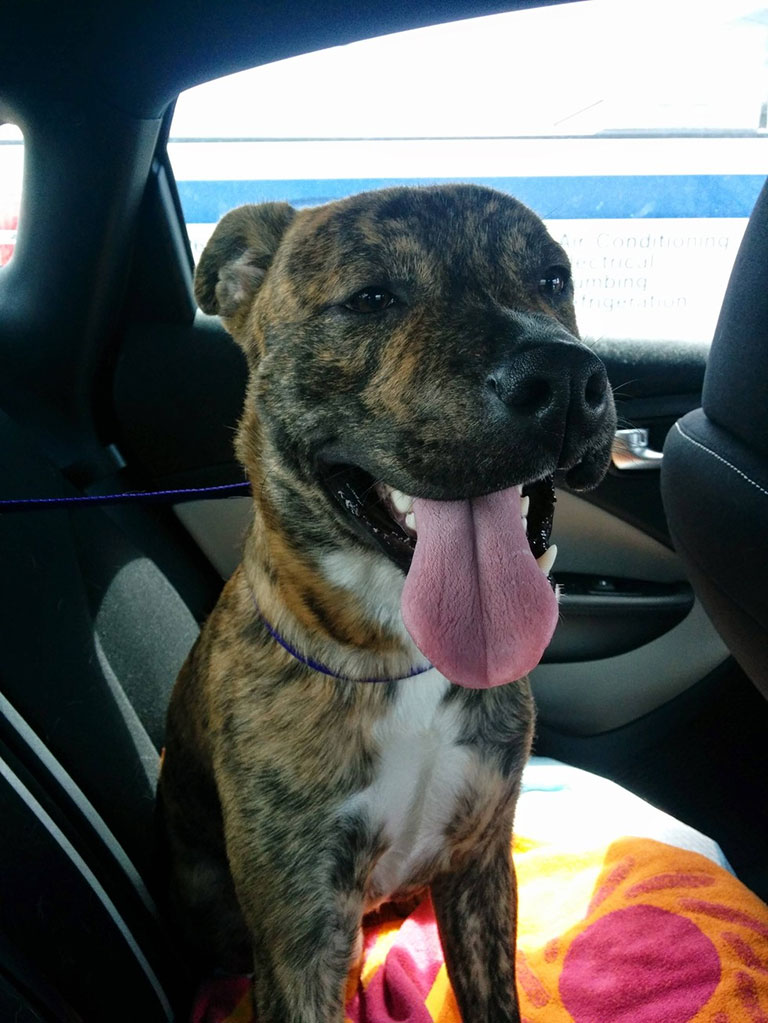




Shelter Dog Rescue and Adoption
Animal shelter staffs and volunteers have come up with some very creative ways to raise awareness in their local communities.
Take a Chance
The Society for the Prevention of Cruelty to Animals of Wake County, North Carolina created this video that has already been viewed over three million times, urging viewers to take a “chance” on a shelter animal.
Pet Store Switch
An animal shelter in Brazil teamed up with a local pet store and for one day switched all the puppies and kittens available for purchase with ones from the shelter. Watch the customers’ reactions when they find out that the adorable animals they are admiring are actually from a shelter and free to adopt.
Real-Life Rooms
The areas designated for potential adopters to interact with the pets in many shelters are stress inducing for the animals. But the relaxed atmosphere of a real-life room helps put the pets at ease, ideal for a meet-and-greet. Many shelters are now adding these rooms as an innovative tool to help increase adoptions.
Anatomy of a Rescue
Dog rescues involve detailed coordination between the animal rescue organization, volunteers, veterinarians, animal shelters, and foster homes. This video highlights Rogers Rescue of southeast Pennsylvania and shows some of the steps that were taken to rescue dogs from overcrowded shelters in West Virginia and Kentucky and place them in adoptive homes.
Interact

Many committed organizations are working to end puppy mills and find adoptive homes for all dogs currently suffering in a mill or shelter. Some, like National Mill Dog Rescue and HSUS are national organizations while others are smaller, local groups working in specific cities and states. You can be an active part of the movement by supporting these groups as a volunteer or with donations.
Shelter Dog and Anti Puppy Mill Advocacy Groups
Old Friends Senior Dog Sanctuary
Tiny Tim Rescue Fund
Learn

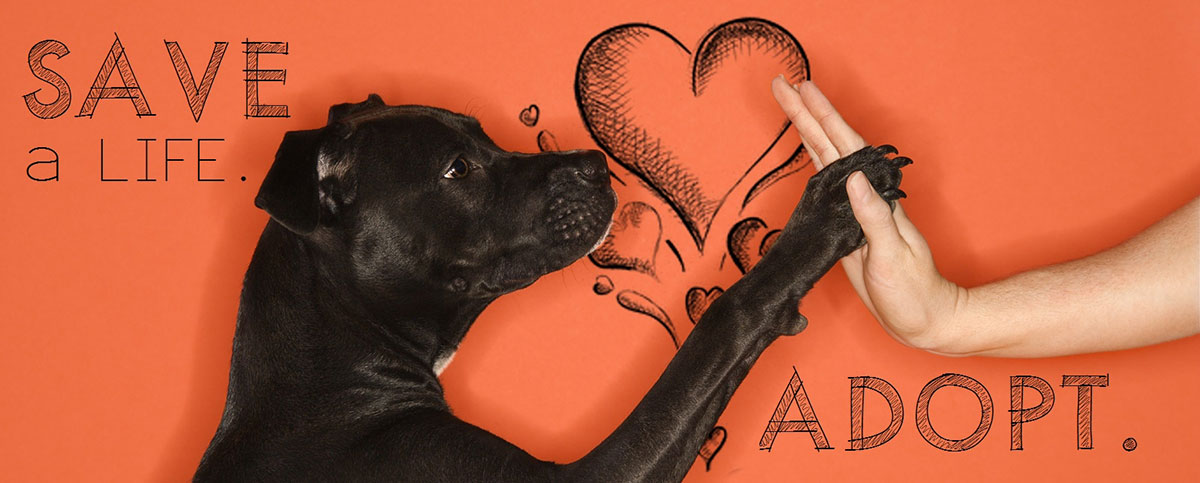
The Prisoners of Greed and No Pet Store Puppies websites are both great sources of information concerning puppy mills and the movement to end them. Each contains links to pending puppy mill legislation, puppy mill protests, and other ways to stand up against the dog breeding trade. These sites are fantastic resources for anyone who wants to make a difference in their community. Dog Adoption Headquarters is a another informative site that features numerous articles and information about adopting dogs from animal shelters. It provides links to animal shelters and adoptable dogs throughout the county.
For tips on puppy care, check out this article.
Watch

The following documentaries are fantastic resources for anyone who wants to know more about the puppy mill industry and the challenges facing animal shelter staff and volunteers. Some give detailed accounts of conditions inside puppy mills, while others give glimpses inside animal shelters and what committed advocates are doing to save as many dogs as possible.





